Jewish Timeline from 2000 BCE
(Circa) Abraham Leaves Ur
2000 B.C.E
Abraham, the Biblical father of Western monotheism, is said to have left Ur to found a great nation in the land of Canaan. There, G-d made a covenant with Abraham to create a great nation in the Land of Israel.
Jacob Settles the House of Israel in Egypt
1850 B.C.E
Due to a severe seven-year famine, Jacob (Abraham's grandson) sends his sons to purchase grain in Egypt. There, they eventually discover Joseph, their younger brother who they had betrayed and sold into slavery. The family reunites and the House of Israel is invited to live in Egypt.
Exodus
1446 B.C.E
The Exodus of Israel out of Egypt, as described in the Bible. Jews, slaves for 400 years, leave Egypt under the leadership of Moses and Aaron.
The 10 Commandments
1446 B.C.E
Given to the Jewish people at Mt. Sinai by G-d to Moses, these ten principles are mentioned twice in the Five books of Moses (otherwise known as the Torah or Old Testament). These principles form the basis of Judaism and Christianity, the core of which is the belief in one-G-d.
Jerusalem Established as the Capital of the Kingdom of Israel
1004 B.C.E
King David establishes Jerusalem as the capital of the Kingdom of Israel.
Building of the First Temple
970 B.C.E - 931 B.C.E
King Solomon builds the First Temple in Jerusalem as the religious and spiritual center of the Jewish people.
Jewish Kingdom Divides into North and South
922 B.C.E
The Jewish Kingdom divides between North (Israel) and South (Judea): Jerusalem becomes the capital of Judea.
Exile of the Ten Tribes of Israel
722 B.C.E
The Northern Kingdom is destroyed by the Assyrians and the ten tribes of Israel are exiled, creating the first Jewish diaspora, or "dispersion." Over the next 750 years, Jews, because of adherence to their traditions and weak political conditions, will easily be scattered to places around the Mediterranean Basin and beyond. Jewish life in the Diaspora will include prayer and focus directed at Judea, which lasts until the modern day.
Destruction of the First Temple
586 B.C.E
King Nebuchadnezzer of Babylon conquers Jerusalem and destroys the First Temple. The generation-long Babylonian exile of the Jews ensues.
Building of the Second Temple
538 B.C.E - 515 B.C.E
After a proclamation by King Cyrus of Persia, who conquered Babylon, permits the exiled Jews to return to the Land of Israel, Jews rebuild the Second Temple in Jerusalem. Click to see the Israel's Museum's interactive model of the temple: http://www.imj.org.il/panavision/model_pre_3eng.html
Jerusalem Captured by Persia
350 B.C.E
Jerusalem is captured by the Persians.
Jerusalem Conquered by Greece
332 B.C.E
Alexander the Great of Greece conquers Jerusalem.
Maccabean Revolts
168 B.C.E - 160 B.C.E
The Maccabean revolts begin, led by Judah Maccabee: Jews rise up against Hellenistic domination and Greek religious and cultural practices in Judea. The revolt is later commemorated during Channukah.
Jerusalem Restored to Jewish Autonomy
163 B.C.E - 142 B.C.E
Jerusalem is restored to Jewish autonomy under the Hasmonean Empire, starting with Simon, the Maccabee’s defeat of the Hellenistic Jews.
Beginning of Roman Rule in Jerusalem
63 B.C.E
An invasion led by General Pompeii ends Hasmonean rule and ushers in centuries of Roman control.
Birth of Jesus
6 B.C.E
Jesus of Nazereth is born.
First Jewish Revolt
66
The First Jewish Revolt is sparked by religious violence between the Hellenists and the Jews.
Destruction of the Second Temple
70
Jerusalem and the Second Temple are destroyed by the Romans, on the 9th day of Av.

Fall of Masada
73
The mountaintop fortress of Masada, the last refuge of Jewish resistance against the Romans, falls after years under siege.
Second Jewish Revolt
132 - 135
The Second Jewish Revolt led by Bar Kochba fails; Jerusalemites are slaughtered and exiled from the city by the Romans; Jews living outside Land of Israel are 'fortified' by this Jewish revolt. Roman Emperor, Hadrian changes country name from Judea to Syria Palestina.
Mishna
200
Rabbi Judah composes the Mishna: a codified book of Jewish law based on the oral tradition.
Byzantine Period
330 - 614
The Byzantine Empire splits off from the Roman Empire and seats its new capital at Constantinople (now Istanbul).
Jerusalem Talmud
350
The Jerusalem Talmud, a synopsis of almost 200 years of analysis of the Mishna in the Academies in Israel, is redacted by Rav Muna and Rav Yossi. Due to the location of the Academies, the agricultural laws of the Land of Israel are discussed in great detail.
Babylonian Talmud
550
The Babylonian Talmud, a synopsis of more than 300 years of analysis of the Mishna in the Babylonian Academies, is redacted as a formal collection by Rav Ashi and Ravina, two leaders of the Babylonian Jewish community.
Life of Muhammad
570 - 632
Muhammad (believed by Muslim’s to be G-d’s final prophet) founds a new religion in the Middle East; at first, Muslims face Jerusalem during prayer (later the direction is changed toward the Kaaba in Mecca).
Period of Instability
614 - 638
In a period of bloodshed and instability, Jerusalem falls to the Persians (614), Byzantines (629) and Arab Muslims (638).
Beginning of Islamic Calendar
622
Muhammad's journey from Mecca to Medina.

Public Domain, Destination360
Today, millions of Muslims retrace Muhammad's footsteps in the "hajj" or pilgrimage to Mecca each year.
Rashidun Period
632 - 661
Rashidun: the period of the Four Rightly Guided Caliphs of Islam. Islam splits into Sunni and Shia over the issue of Muhammad’s successor.
Umayyad Dynasty
638 - 1099
After a conquest, the Islamic Umayyad Dynasty rules the empire from Damascus. After the Umayyad's conquer Jerusalem, Abd Al-Malik ibn Al Marwan, a leading caliph of the dynasty, builds the Dome of the Rock and the Al-Aqsa mosque in Jerusalem.
Pact of Umar
717
The Pact of Umar is issued; conditions of tolerated non-Muslims (dhimmis) living within Muslim-controlled areas are prescribed. The pact dictates the rights and responsibilities of Jews and Christians living in Muslim lands.
Abbasid Dynasty
750 - 1258
The Abbasid Dynasty rules the Islamic Empire from Baghdad.
Charter of Protection
825
Holy Roman Emperor Louis (son of Charlemagne) issues a Charter of Protection to Italian Jews, encouraging Jewish trade (including slave trade), relaxing political restrictions, and allowing some juridical autonomy (due to his needs for Jewish money, which made him beholden to Jewish merchants).
Jewish Golden Age in Spain
912 - 1066
The Golden Age of Jewish culture in Muslim Spain.
Founding of Cairo
969
The Egyptian city of Cairo is established by the Fatimids.
End of Umayyid Dynasty
1031
The Umayyid Dynasty in Spain ends, after 250 years of stable rule.
Massacre of Jewish Families in Spain
1066
Joseph ibn Nagrela and 1,500 other Jewish families are massacred in Granada, Spain.
Crusades
1099 - 1187
The Crusader Period begins, with the first capture of Jerusalem by Christian Crusaders from Europe. The Crusades usher in a period of European Jewish insecurity as Jewish life and property are exposed to murder, pillage, and religious coercion.
Moroccan Jews Ordered to Convert to Islam or Leave Morocco
1107
Yoseph ibn Tahifin, Almoravide leader and founder of Marrakesh, orders all Moroccan Jews to convert or leave the country.
Judah Halevi Boards Ship Bound for Alexandria
May 8, 1141
A Spanish philosopher and Hebrew poet, Halevi is known for a wide range of secular and religious poetry, which strongly promote the return of diaspora Jews to Jerusalem. After moving from Toledo to Cordova, where he works as a physician, discontented with living in Spain, following the death of his wife, Halevi goes to Palestine. Beginning in Alexandria, Egypt, he makes his way to Jerusalem, where, as legend has it, an Arab kills him upon his arrival. His pilgrimage and return to Eretz Yisrael is dealt with extensively in his poetry.
Almohadin Period
1148
The Almohadins succeed the Almoravides as rulers of Muslim Spain and Morocco. Jews and Christians have the choice to convert or be expelled.
Ayyubid Period
1187
Saladin captures Jerusalem, starting the Ayyubid period of Muslim rule, which lasts until 1250.
Fourth Lateran Council
1215
The Fourth Lateran Council, held in Rome, calls for the separation of the Jews from the Christians and says the Jews must wear distinctive dress. Also, Jews are relegated to usury (money lending). The Church decides that Jews are the servants of Christians.
Charter of Valencia
1239
King James the First of Aragon issues the Charter of Valencia in which he grants the Jews of Aragon rights and protection. The Jewish courts (Bet din) were thereby authorized to try all community cases, except capital offenses. He furthermore forbade all harassment against Jews.
Jewish Freedom in Portugal
1248 - 1325
Jews in Portugal enjoy a fair amount of freedom. However, by the end of this period, the Church begins to resent the position of the Jews.
Mamlukes Rule Jerusalem
1250 - 1517
The Mamlukes rule Jerusalem.
Nachmanides Revives Jerusalem's Jewish Community
1263
Nachmanides, a Spanish Jewish doctor, known as Ramban, participates in a public debate with a Dominican monk and is convicted for publishing his side of the Disputation; the following year, he goes to Jerusalem and helps revitalize Jewish presence in the city. He inspires other Jews to return. The Ramban Synagogue, where he established his place of worship in the 13th century, still exists as one of the oldest synagogue in Jerusalem.
Polish Charter with Jews
September 8, 1264
Poland, largely ruined by hostile invasions, tries to draw new settlers from German lands. In order to attract Jews, the King of Poland, Boleslaw the Pious, offers the Jews rights in the form of a charter. Specific rights are given to Jews, distinguishing them from the general population and offering them some autonomy. The charter was followed by others recognizing and extending those rights, like the famous charter of 1333 offered by Casimir the Wise.
Anti-Jewish Riots in Spain
1391
Anti-Jewish rioting ensues in Spain and forced conversion occurs in several cities.
Punitive Laws against Jews in Spain
1412
Punitive laws are issued against Jews requiring them to wear distinctive clothing, grow beards and adhere to economic restrictions in Spain. More forced conversions of Jews take place.
Holy Child of LaGuardia Case
1491
The alleged ritual murder (blood libel) of a Christian baby by Jews. This case greatly assisted the Spanish Inquisition in its campaign against heresy and crypto-Judaism.
Columbus Sails to the New World
1492
Sailing from Spain, Christopher Columbus discovers the New World.
Conversion of Portuguese Jews
1497
The Jews of Portugal are forcibly converted. Sephardic Jews who were forced to convert to Christianity but secretly maintained their own Jewish traditions as crypto-Jews were called Marranos.
The Protestant Reformation
1517
Martin Luther tacks his 95 theses on the wall of his monastery, challenging the teachings of the Roman Catholic Church on the nature of penance, the authority of the Pope, and the usefulness of indulgences. His initiatives spark a theological debate, resulting in the birth of the Lutheran, Reformed, Anabaptist and other Protestant traditions within Christianity. He insists that Jews convert to Christianity, invoking anti-Semitism.
The Ottoman Empire Captures Jerusalem
1517
The Ottoman Empire would go on to rule Jerusalem until the British takeover in December 1918.
Jerusalem's Walls Rebuilt
1535 - 1538
Suleiman the Magnificent rebuilds the city walls of Jerusalem.
Publication of Joseph Caro’s Shulchan Aruch
1563 - 1565
Born in Toledo Spain, Joseph Ben Efraim Caro’s family travels through Turkey, eventually settling in the town of Safed in the Galilee region of the Land of Israel. As a leader of Jewish scholarship in this mystical city, Caro writes the Shulchan Aruch. It is widely viewed as one of the most complete and authoritative sets of Jewish laws in existence.
Spain Establishes an Inquisition Office in Mexico City
1571
Perpetuating the Spanish Inquisition in colonial Latin America, an office is set up in Mexico City aimed at persecuting Latin American Jews in addition to homosexuals and non-Christians. The Inquisition, which is established by Spanish Catholic monarchs in 1480, lasts until 1834 and claims the lives of more than 150,000 non-Catholics. Under the inquisition in Latin America, being Jewish could result in execution by burning at the stake, forcing many Jews to either convert to Christianity or hide their religious practices.
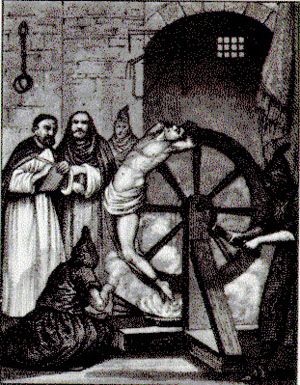
arxxiduc.files.wordpress.com
A painting depicting a Latin American Jew being tortured by Inquisition officials in hopes of getting a confession of heresy.
Amsterdam Becomes a Jewish refuge
1612
Amsterdam becomes a refuge where Jews can worship freely.
First Jewish Community in North America Established
1654
Jewish refugees fleeing persecution in Recife, Brazil, arrive in New Amsterdam. The 23 Recife Jews establish the first Jewish community in North America (individual Jews, however, had been there as early as the Spanish conquistadors in the west).
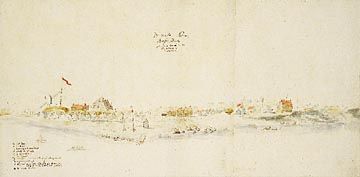
A contemporary depiction of New Amsterdam (now New York), where the first North American Jews settled.
First Jewish Cemetery in the US Created
1675
The Jewish community of Newport, Rhode Island creates their own cemetery, the first in America. It is the oldest existing Jewish cemetery in the U.S. and later becomes the subject of a Henry Wadsworth Longfellow poem, entitled “The Jewish Cemetery at Newport.”
First Synagogue in North America Opens
1730
The Shearith Israel Congregation in New York City opens the Mill Street synagogue, the first Jewish house of worship in North America.
Jewish Populations Grow in North America
1730 - 1750
Significant Jewish populations are established in Philadelphia, Savannah, Charleston, and Newport.
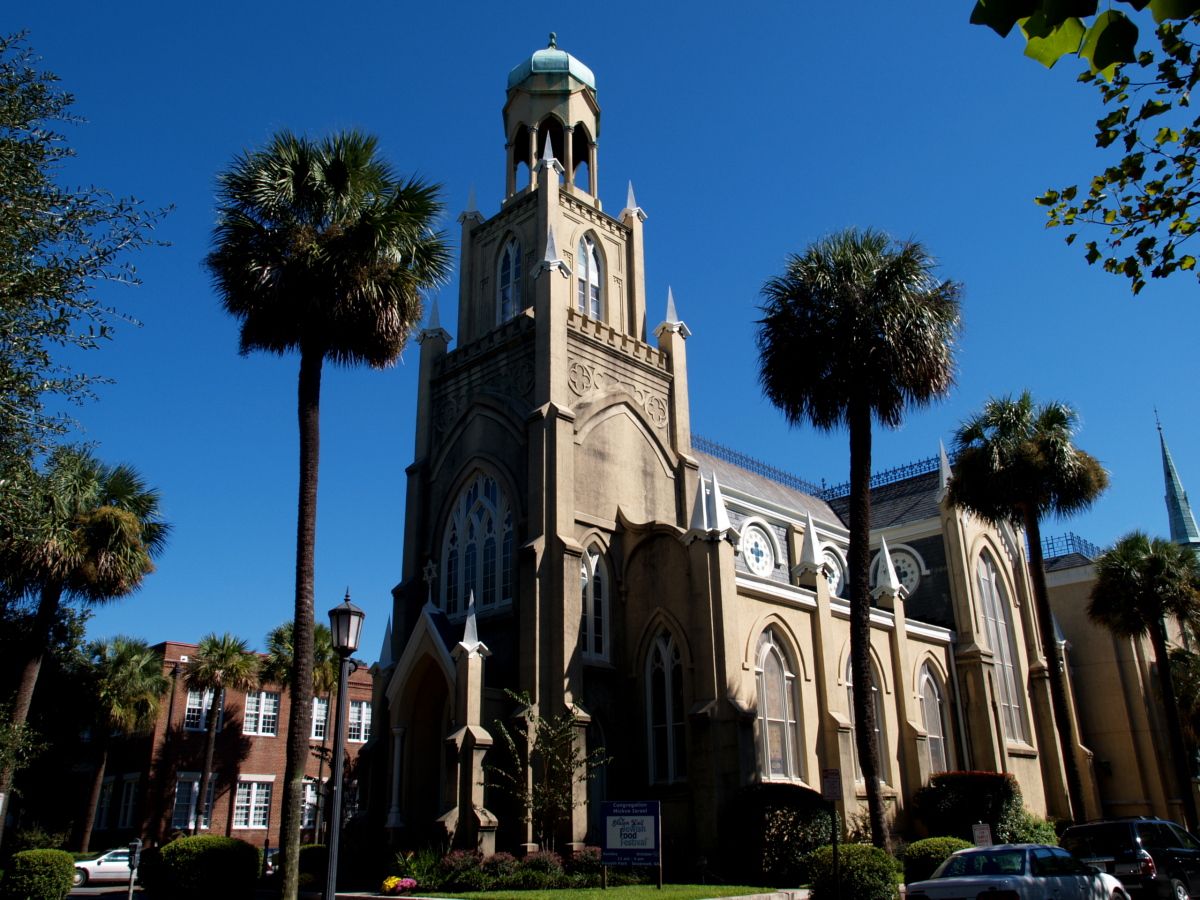
Public Domain, wyattsailing.com
Savannah's congregation Mikveh Israel, the third oldest synagogue in the US
First Publication of English Translations of High Holiday Prayer Books
1760
The first English translations of evening services for Rosh-Hashanah and Yom Kippur are printed in New York.
Touro Synagogue Dedication
1763
Newport Jews dedicate the synagogue, later called the Touro Synagogue (the only surviving colonial synagogue structure).
First Continental Congress
September 5, 1774
The First Continental Congress issues a list of grievances against King George and boycotted British goods.
New York State Constitution Prohibits Religious Discrimination
1775
The Jews, and other minorities, of New York are granted full rights under the New York state constitution, which abolishes religious discrimination
American Revolution
1776
Jews divide in the face of the American Revolution; majority favors new nation.
Emmanuel Leutze's "Washington Crossing the Delaware," which depicts one of Washington's most celebrated victories in the early, difficult stages of the war
Moses Montifiore one of the Great Jewish Philanthropists of his Time Invests in Jewish Presence in Palestine
October 24, 1784
Montifiore (1784-1885) uses his wealth to promote the development of Eretz Yisrael and fight for Jewish causes. Born in England, he makes his fortune as a stockbroker. He visits Eretz Yisrael seven times, funding the building of Rachael’s tomb, new Jerusalem neighborhoods, and many synagogues. He supports a school for girls in Jerusalem, and in 1860, he founds the residential area of Miskenot Sha’ananim on the outskirts of Jerusalem' Old City. In 1864 he intercedes with the Sultan of Morocco to ease restrictions on Jewish living there.
US Constitution Prohibits Religious Discrimination
1791
The First Amendment to the US Constitution forbids Congress from making laws “respecting an establishment of religion or prohibiting the free exercise thereof”.
France Becomes the First Nation in Europe to Emancipate Jews
September 27, 1791
After a parliamentary and public discussion, the Jews of France are awarded French citizenship. This happens in two stages. Sephardim, mostly of Portuguese origin, who spoke French are granted civil rights on Jan. 28, 1790. The Ashkenazim, who were less acculturated into French society, are given civic equality on Sept. 27, 1791. The law of 1791, also marks the end of French Jewry's religious-legal autonomy.
Etting Appointed Maryland US Marshall
1801
The first Jew in the U.S. to hold public office, Reuben Etting, is appointed U.S. Marshall in Maryland.
First American Ashkenazi Synagogue Founded
1802
American’s first Ashkenazi synagogue, Congregation Rodef Shalom, is founded in Philadelphia.
Founding of the Female Hebrew Benevolent Society
1819
The Female Hebrew Benevolent Society, the first of its kind, is founded in Philadelphia by Rebecca Gratz. The Society is created to aid Philadelphia's impoverished Jews, providing them with food, clothing, and other essentials. Later, in 1838, Gratz founds the first Sunday school, which ultimately becomes Gratz College.
First American Jewish Periodical Established
1823
The first American Jewish periodical, "The Jew," is established by Soloman H. Jackson to combat Christian missionaries.
Canadian Jews Are Granted Full Citizenship
June 5, 1832
Canadian Jews, who had been living as second class citizens, are officially granted full rights as British subjects, including the right to become members of Parliament and hold other public positions. Previous to this, Jews are not considered to be true Canadians, and in 1807, when Ezekiel Hart is elected to the legislature of Lower-Canada, he is promptly asked to step down from his position as a result of him not being Christian.
Rabbi Judah Alkalai Writes "Shema Yisrael," A Booklet Calling for the Creation of a Jewish State
1834 - 1834
Rabbi Judah Alkalai is born in Sarajevo in 1798. Raised and receiving his education in Jerusalem, he becomes the rabbi of Semlin, a town on the outskirts of Belgrade in 1825. Alkalai advocates for the use of Hebrew as the language of the Jewish people, calling for a return to the Land of Israel though fundraising and settlement. Many of his ideas would later be advocated by Zionist leaders like Theodor Herzl and others such as the creation of a fund to purchase land in Israel and an assembly to oversee national activities. In 1871, after spending time traveling throughout Europe trying to promote his ideas, Alkalai settles in Jerusalem at the age of 73, dying in 1878.
Hatti Sherif: Ottoman Reform
November 1839
Beginning of Ottoman reform movement that lasts for thirty years; it includes a guarantee of rights to all Ottoman citizens, including Jews.
America's first Ordained Rabbi Immigrates to Baltimore
1840
Abraham Rice, America’s first ordained Rabbi, immigrates to America from Bavaria and assumes a pulpit in Baltimore; other rabbis follow.
Damascus Blood Libel
1840
An Italian monk disappears from Damascus. Many Jews are charged and convicted of ritual murder. As news of the case spreads across the Western world. In Damascus, Jews (including children) are imprisoned and “confess," often under torture.
Sir Moses Montefiore secures the release of the surviving accused
Divide Emerges Between Reform and Orthodox Jews
1840 - 1846
A historic dispute ensues over the installation of an organ in Charleston, dividing "Reform" Jews from those who begin to call themselves "Orthodox”.
The interior of Charleston's congregation Mickve Israel (which contains an organ)
Yehiel Michael Pines is Born
October 17, 1842
Born in Ruzhany, Belorussia, Pines is a religious scholar, Zionist leader, and writer, who begins his career regularly contributing to the European Jewish publications, Ha-Karmel, Ha-Meliẓ, and Ha-Levanon. Settling in Jerusalem in 1878, representing renowned Jewish philanthropist Moses Montifiore, he writes papers chronicling the issues facing Jews in Palestine, making recommendations to Montifiore and his associates on how to better and more productively fund the growing Yishuv. A famous provider of resources to Jewish immigrants in Palestine, he likewise helps craft Hebrew as a modern, spoken language.
Moshe Leib Lilenblum is Born in Lithuania
October 22, 1843
A central figure in the Hovevei Zion (lovers of Zion) movement, Lilenblum (1843-1910) is a celebrated author, philosopher and religious leader in the European Jewish community. Beginning his career believing that education for Jews and non-Jews alike is the guarantee to tolerance of Jews in Europe, he is shocked by the violence that occurs in the 1881 Pogroms in Russia, changing his opinion on the possibility of tolerance for Jews. He begins advocating for the creation of a Jewish national consciousness, writing the article "Obshcheyevreiski Vopros i Palestina," where he speaks about the reestablishment of the Jewish community in Palestine as the solution to the Jewish question.Levin Elected to US House of Representatives
1844
Lewis Charles Levin becomes the first Jew elected to the U.S. House of Representatives. He is the American Party candidate from Pennsylvania. Levin is reelected twice before being defeated in 1850.
Yulee Elected to US Senate
1845
Florida Democrat David Levy Yulee becomes the first Jew elected to the US Senate. Yulee is first elected in 1845 (serving until 1851), and then for another term from 1855 to 1861.
Solomon Schechter is Born in Romania
December 7, 1847
A rabbi, scholar, and professor, Schechter is born in Romania. He studies Talmud and Jewish texts in Vienna, teaches at Cambridge University and University College in London. Most known for his discovery of thousands of pages of Jewish manuscripts in the Geniza in Cairo, Egypt, Schechter becomes president of the prestigious Jewish Theological Seminary in New York (1902-1915), where he founds the United Synagogue of America, today’s Conservative Jewish movement. For Schechter, Zionism meant "returning to Zion, not merely or mainly as a national revival, or reaction to anti-Semitism, but a fundamental part of Judaism as essential as Sabbath observance. For him Palestine needed to be a spiritual center for the Jewish people, a view closely held by Ahad Ha'am." (Norman
California Gold Rush
1850
The California Gold Rush of 1849 brings an influx of Jews to California, where they work mainly as merchants and storekeepers, causing San Francisco’s Jewish population to swell from 6% to 10% of the city.
One product of the Jewish involvement in the gold rush was blue jeans, invented by Californian Jewish entrepreneur Levi Strauss.
Albany Synagogue Mixes Men and Women
1851
Congregation Anshe Emeth, in Albany, NY, becomes the first synagogue to seat men and women together in mixed pews.
A modern synagogue with mixed seating
Isaac Mayer Wise Moves to Cincinnati
1854
Isaac Mayer Wise, who immigrated to America in 1846, moves to Cincinnati with a lifetime contract, committed to shaping an American form of Judaism. He begins publishing "The Israelite."
Cleveland Rabbinical Conference
1854
A rabbinical conference in Cleveland aimed at promoting a United American Judaism fails, underscoring American Judaism’s deepening ideological divisions.
Hatti Humayun in Ottoman Empire
February 18, 1856
Ottoman Sultan offers freedom to all creeds, especially in education and administration of justice; minorities in the Empire, including Jews, are provided certain rights.
Ahad Ha-am Born in Russia
August 18, 1856
Asher Zvi Hirsch Ginsberg, known by his pen-name, Ahad Ha'am, is an essayist and prominent early-Zionist thinker. Opposing political Zionism, and particularly disliking Theodor Herzl, he advocates for a Jewish cultural renaissance and not a political one. Ahad Ha'am’s writings display a concern for how Arabs in Palestine will view Zionism. He is considered to be the founder of cultural Zionism. He likewise establishes Bnei Moshe (Sons of Moses), a group that turns many early Zionist immigrants, Hovevei Zion (Lovers of Zion), into a movement emphasizing the use of the Hebrew language and Hebrew culture.
Micah Joseph Berdichevski is Born
August 19, 1856
Born in Ukraine, Berdichevski (1856-1921) is a scholar and writer who descends from a long lineage of Rabbis. His career as a writer begins during his Yeshiva studies in the 1880s, however, in 1896 he publishes a series of widely talked about articles in Hebrew, attacking the writings of Zionist thinker Ahad Ha-Am, making him an opposition leader of the Hebrew literary movement. In 1920, after his father and brother were murdered in pogroms, he releases a series of works, memorializing Eastern European Jewry. Today, all of his writings are available in an archive in Holon, Israel.
Jews Effectively Emancipated in England
July 26, 1858
After years of incremental steps towards full civil rights for English Jews, Lionel de Rothschild is allow to join the House of Commons (British parliament). Rothschild had twice previously been elected to the House, but not allowed to enter. This signaled virtually full civil rights for Jews in England.
1860 Jewish Population
1860
The American Jewish population rises from 15,000 in 1840 to 150,000 in 1860, mostly due to immigration stemming from instability in central Europe caused by the revolutions of 1848.
The Mishkenot Sha’ananim Neighborhood of Jerusalem is Developed
1860
Jerusalem’s first Jewish settlement outside of the Old City’s walls, situated just west of the Jaffa Gate and Armenian Quarter, Mishkenot Sha’ananim is developed by Jewish philanthropist Moses Montifiore with funds provided by New Orleans businessman, Judah Touro. Recognized by its massive windmill, the area initially boasts a security wall, providing protection against Bedouin marauders and thieves. Only after the 1967 war, with Israel in full control of the area near the Old City, does it evolve into a modern convention area with guest quarters and a gentrified location for cultural events.
Rabbi Zvi Hirsch Kalischer Publishes his Book “Drishat Zion" (Seeking Zion) 1862
Moshe Hess Publishes his Book “From Rome to Jerusalem” Advocating for the Revival of the Jewish People
1862
Born in Germany, receiving a Jewish education, Hess goes on to become one of the leaders of the German socialist movement. However, later in his life (1875-1812), inspired by the emergence of nationalism, he returns to his Jewish roots and promotes the idea of liberating Jerusalem and the resettlement of Jews in Judea. He wrote his book three decades before Herzl organized the first Zionist Congress in 1897.
Richard James Horatio Gottheil is Born
October 13, 1862
Founder of Zeta Beta Tau, a traditionally Jewish fraternity, Gotteil earns his PhD in Berlin in 1886, immediately returning to the US to teach Semitic languages and rabbinical literature at Columbia University. A fervent Zionist at a time when such a philosophy was unpopular in the US, Gottheil serves as President of the Federation of American Zionists from its inception in 1898 until 1904. He likewise serves as vice-president of the Universal Zionist Society, sitting on numerous World Zionist Organization committees throughout his career.
Jews in Civil War, Order Number 11
December 17, 1862
Union General Ulysses S. Grant issues Order No. 11, expelling all Jews from the area under the control of the Army’s Department of Tennessee. Grant contends that Jewish merchants are trading with Confederate soldiers. The order is eventually overturned by President Abraham Lincoln after some Jews from Paducah, KY intervene, meeting with the President.
Millet Regulations in Ottoman Empire Revised
March 29, 1863
Confessional groups such as Jews, Armenians, Greek Orthodox and other religions had established a considerable amount of autonomous self-rule in the Ottoman Empire. These non-Muslim minorities are usually directed by a head. In many Jewish communities there is a Bet Din, or religious council that rules on religious matters such as divorce, marriage, and inheritance. The millet system gives Jews and other minorities an administrative structure, keeping them focused on the identity based on religion. For Jews, local administrative structures such as the millet, local councils, and Beit Din provide communal experiences which carry over in method if not exact content to the organizations that later evolve to promote Jewish nation building.
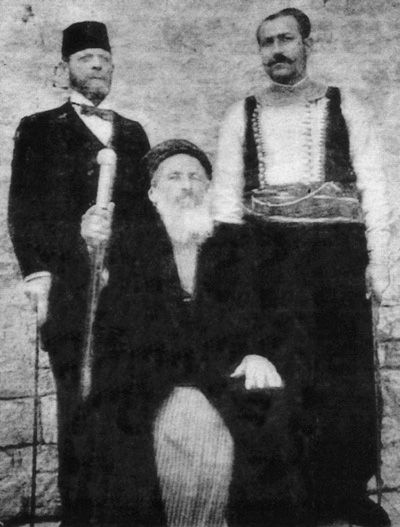
Public Domain, Bible Discovered
An Av Beit Din (Chief Rabbi) in Aleppo, Syria (1908); thanks to the Millet system, such religious jurists had legal authority
Jewish Settlement in Palestine
1865 - 1885
The Jewish inability to become fully emancipated in Europe and recurrent waves of anti-Semitism in eastern Europe, and to a lesser degree in western Europe, stimulate emigration. A small number of eastern European Jews and Jews from Arab lands immigrate to Palestine; the vast majority of Jews either remain in eastern Europe or migrate to South Africa or to other western hemisphere locations, including North and South America. Jewish settlement in Palestine takes place in mostly rural areas.
Jews Emancipated in Hungary
December 20, 1867
After several decades of national debate, many restrictions on Jews are abolshed in 1859 and 1860. The bill on Jewish emancipation is passed in the Hungarian Parliament with little opposition. This leads to an increase of Jewish immigrants into Hungary from neighboring regions.
Miksa Falk was a Hungarian Jew who was able to enter national politics after emancipation
Mikveh Israel Founded
February 17, 1870
Mikveh Israel is the first Jewish agricultural school in the Land of Israel. On October 28, 1898 Herzl meets the German Kaiser at the entrance to the school, seeking German support for the establishment of a Jewish State.
Jews Emancipated in Italy
December 15, 1870
During the Italian revolution of 1848, most states in Italy proclaim civic equality for the Jews. With the unification of Italy in 1870, Jews are granted emancipation when all religious restrictions are abolished by a decree in October 1870. The Itlaian parliament grants full equality on December 15, 1870.
the Land of Israel
1871
The Ottoman Land Law of 1858 seeks to collect more revenue from land owners. Acqusition of title deeds could generate revenue. However, by providing title deeds, individual registrants are given a basis for collateral or for debt payment. Gradually, in the area of Palestine and elsewhere in the Middle East, rural populations exchange title deeds for debt relief, a new plough, seeds, or just cash. Peasants who once owned or worked their own land now give others a chance to accumulate title deeds and eventually large areas of land. Accumulating title deeds and land, where land is a sparse but valuable commodity, gives new landowning elites enormous political power, and makes peasants dependent upon them. Larger landowners are usually more than willing to sell portions or all of their holdings to Zionist buyers.
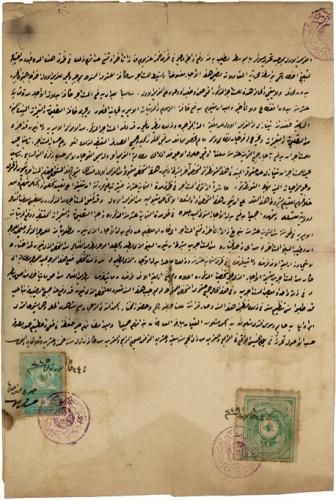
Public Domain, Stanford University
This Ottoman land deed (used in 1909) was the contract that allowed the original 40 families to settle in what is now Tel Aviv
Jews Emancipated in Germany
April 14, 1871
Although Jews had a played a prominent role in the 1848 uprising for civil rights and subsequently been emancipated in certain German principalities, it is not until the unification of the German Empire in 1871 that Jews across Germany receive full civil rights.

The constitution of the German Empire (shown here signed by Emperor Wilhelm) included a clause granting Jews full civil rights
Founding of the Union of American Hebrew Congregations
1873
The Union of American Hebrew Congregations is established in Cincinnati. It aims to create a rabbinical seminary, strengthen Jewish education, and preserve Jewish identity. It soon becomes the Reform Jewish Congregation union.
Chaim Nachman Bialik Born
January 9, 1873
Chaim Nachman Bialik, among the most prominent of Hebrew poets who influence modern Jewish culture, is born. Recognized as Israel’s “National Poet,” he is distinguished by his poetry of admonition and rebuke. He influences generations of Israeli poets.
Chaim Nachman Bialik ca. 1923
Chaim Weizmann Born
November 27, 1874
A key leader in the formulation and diplomacy of Zionism, Weizmann is a chemist by profession and the diplomatic linch-pin for securing the 1917 Balfour Declaration. He leads the World Zionist Organization and in diplomatic missions abroad, all aimed at securing international support for Zionism and the Jewish state. In 1949, he becomes Israel's first President, holding the position until he dies on November 9, 1952.
Founding of Hebrew Union College
1875
Hebrew Union College is founded in Cincinnati under the presidency of Isaac Mayer Wise. Its graduates promote Reform Judaism.
Growing Anti-Semitism in the US
1877
Joseph Seligman, a prominent banker, is refused admission to the Grand Union Hotel in Saratoga Springs -- allegedly because he is Jewish. The incident highlights the growth of social anti-Semitism in America.
Jews Receive Equal Rights in New Hampshire
1877
New Hampshire becomes the last state to give Jews equal political rights.
Hatikvah is written
1878
Galician poet, Naphtali Herz Imber writes a poem called "Tikvatenu" (Our Hope), later adopted as the Zionist anthem, Hatikvah. English translation of Hatikvah: "As long as deep in the heart, The soul of a Jew yearns, And towards the East, An eye looks to Zion, Our hope is not yet lost, The hope of two thousand years, To be a free people in our land, The land of Zion and Jerusalem."
Petach Tikva is Founded
November 3, 1878
Petach Tikva is founded by religious pioneers in 1878 as the first modern Jewish settlement – with the assistance of funds from Baron Rothschild. It is situated near the sources of the Yarkon River. Petach Tikvabecomes known as the “Mother of the Moshavot.” Founded by Jerusalem Jews, it is abandoned and then reconstituted in 1882 by immigrants of the First Aliyah
Zionism-Israel.com
Petach Tikvah, c. 1916
1880 Jewish Population 1880
World Jewish population estimate is 7.8 million: 90% in Europe, mostly Eastern Europe, around 3.5 million in the former Polish provinces. 88% of world Jewry lives in non-democratic countries. By comparison, in 2010 84% of world Jewry lives either in the US, Israel, or other countries where they have civil and political rights.
Polish painter Alexander Gierymski's depiction of a Jewish orange seller. In 1880, the vast majority of Jews continued to live in penury in Eastern Europe
Yemenite Jews Begin Emigrating to Palestine 1881
Between 1881 and 1915 nearly 10% of Yemen’s historically vibrant Jewish population leaves Sana’a and other towns in the center of the country for Palestine. These groups make up a significant portion of the First Aliyah and join European and Sephardic Jews in Jaffa and Jerusalem.
Ben Yehuda makes Aliyah 1881
Eliezer ben Yehuda makes aliyah to Land of Israel and leads efforts to revive Hebrew as a common spoken language.
Eliezer Ben Yehuda working at his desk in Jerusalem
Pogroms in Russian Empire
1881 - 1918
Enactment of additional laws restricting Jewish rights follow the assassination of Tsar Alexander II. Attacks against Jewish businesses, homes and synagogues had occurred periodically in Europe going back to the middle of the 13th century. They also occur in German lands, Denmark, and Poland, and the Ukraine (including in the cities of Odessa, Kiev, Warsaw,Kishinev). Attacks against Jews would later take place in Middle Eastern areas such as Iraq in 1941 (Farhud) and in Aleppo in 1947.
Moshe Maimon's depiction of Jews returning home to a progrom wrecked home, and a Rabbi reading Kaddish for a dead relative
Jews Leave Russia En Masse
1881
Discrimination against Jews, denial of civil rights, and government sanctioned attacks on Jews (pogroms), spark a massive Jewish exodus from Russia to the United States. By the time immigration is curtailed in 1924 with the enactment of the Johnson Immigration Act, an estimated 2.5 million Jews come to America, swelling the Jewish population there to over four million by 1930.
Pinsker Publishes his Book “Auto-Emancipation”
1882
Born in Odessa, Dr. Yehuda Leib Pinsker (1821-1891) studies law and medicine, eventually pursuing a career as a medical doctor. After the 1871 pogroms in Odessa, he becomes active in the Hibbat Zion movement and is elected as its leader in the Katovits Conference in 1884. He advocates for the emigration of Russian Jews and the establishment of a National Jewish Center, if possible, in Eretz Ysrael, which is to be the homeland for all Jewish people.
The First Aliyah
1882
The First Aliyah marks the beginning of the return to the Land of Israel. This group of immigrants, consisting of 35,000 ideologically devoted Jews from Eastern Europe and 2500 from Yemen, laid the foundations for the establishment of the State. By 1903, 28 new moshavot (agricultural communities) had been founded, and 90,000 acres of land had been purchased. However, after this small spurt of immigration, the pioneering drive was temporarily exhausted and a period of stagnation set in.
Hovevei Zion Establishes Rishon LeZion, its First Kibbutz in Land of Israel
July 31, 1882
Hovevei Zion (Lovers of Zion) goes on to found 30 Jewish farming communities in Land of Israel.
Kindergarten in Rishon LeZion, 1898
Samuel Mohilever is Made the Rabbi of Białystok, Poland
1883
Known for fusing Religious Judaism and Practical Zionism, Rabbi Mohilever (1824-1898) is one of the key founders of the Hovevei Zion (Lovers of Zion) Movement, serving as its president with Leon Pinsker as his chairman in the 1880s. Attending the First Zionist Congress, he is instrumental is pushing Jews to move from Europe to development towns in the Land of Israel, as well as motivating Jews to buy swaths of land wherever possible in Palestine. He is the namesake of Kibbutz Gan Shmuel near Haifa.
Peretz Smolenskin Dies
February 1, 1885
Smolenskin (1842-1885), a Jewish-Russian writer, is known for his novels, including the “A Wanderer on the Path of Life,” “Burial of the Ass” and “The Inheritance,” which all depict Jewish life in the Russian Empire. “A Wanderer” depicts the unsure existence of Jewish life between the ghetto and the emancipated world. Smolenskin is also the founder of Ha-Shahar, an early Hebrew publication that supports Jewish Nationalism and the Haskalah (Jewish enlightenment) movement.
Pittsburgh Platform
November 8, 1885
The eight point “Pittsburgh Platform” promulgated by Reform rabbis seeks to demonstrate “what Reform Judaism means and aims at.”
JTS Opens in New York
January 2, 1887
After a year of preparatory work, the Jewish Theological Seminary opens in New York and ultimately becomes the main seminary for conservative rabbis.
S.Y. Agnon is Born in Galicia
July 17, 1888
After living in Berlin and writing prolifically, he settles in Palestine in the 1920's. As a fiction writer, he focuses on the intersection of modernity and traditional Jewish life. He is the first Israeli to earn a Noble Prize (for literature), in 1966.
Founding of the Central Conference of American Rabbis
July 8, 1889
The Central Conference of American Rabbis is founded and soon becomes the rabbinical arm of the Reform movement. According to the Jewish Encyclopedia, it took no particular attitude toward Zionism at that time.
The original Central Conference of American Rabbis, 1889
The Odessa Committee is Established
1890
The Russian Tsarist government approves the establishment of "The Society for the Support of Jewish Farmers and Artisans in Syria and Eretz-Israel," a charity organization which came to be known as "The Odessa Committee." The Society is part of Hovevei Zion, "the lovers of Zion."
First meeting of the Odessa Committee in 1890
Jewish Impoverishment and Degradation in Russia
July 6, 1893
Jewish life in rural Russia is captured in a first hand account by an American diplomat, Andrew White.
White's official portrait as Minister to Russia
Dreyfus Trial
October 1894 - January 1895
Theodore Herzl reports on the Dreyfus trial in Paris, in which a French Jewish army captain is falsely accused of giving military secrets to the Germans. His guilt is trumped up because he is Jewish. The trial is evidence that even in 'liberal' France, Jews do not enjoy civic equality with non-Jews. Herzl is dismayed enough to write an appeal for Jews to establish a state of their own.
Author Emile Zola came to Dreyfus' defense with the stirring "J'ACCUSE!" open letter to French President Felix Faure, accusing the government of scapegoating Dreyfus and covering up his innocence. Controversy
The Jewish Question and the Plan for the Jewish State
February 1896
Theodor Herzl publishes "The Jewish State," calling for a Jewish national territory. (source)
The First World Zionist Congress
August 29, 1897 - August 31, 1897
Held in Basle, Switzerland, and convened by Theodor Herzl, the first Zionist Congress is held. It debates issues relating to the Zionist cause and lays out ideas for creating a homeland for the Jewish People in Palestine. This Congress, attended by more than 200 delegates from across continents, includes future important figures in Zionist history. The Basle Program adopts Ha’tikvah as the national anthem, posits a four point plan for a Jewish state, and elects Herzl as the president of the Zionist Organization.
Gershom Sholem is Born
December 5, 1897
Gershom (Gerhard) Scholem, a preeminent scholar of Jewish mysticism, is born in Berlin, into an assimilated German family. In 1915, he is expelled from school for writing a letter opposing Germany’s involvement in World War I, followed by his first published work in 1918, a German translation of Yizkor – A Memorial Volume for Fallen Watchmen and Workers in Eretz Yisrael. In 1923 he arrives in Eretz Yisrael, becoming a professor at the Hebrew University. Sholem is the first head librarian of the National Library’s Judaic collection, where he creates a hybrid method of the Dewey Decimal System to catalogue Judaica. He eventually donates his personal book collection of over 25,000 works to the National Library of Israel.
South African Jews Found the ‘South African Zionist Federation’
1898
Between 1880 and 1910 the South African Jewish community grows from 4,000 to 40,000; it is predominantly comprised of Jews fleeing from pogroms and discrimination in Eastern Europe. In 1898 the South African Zionist Federation unifies several previously established Zionist/Jewish organizations. At its high point in the 1970's, the South African Jewish community reaches 120,000. However, beginning in the early 1980's, as a result of economic difficulties, South Africa loses some 1,500 Jews every year, mainly to Israel and the US.
The First Canadian Zionist Organization is Founded in Montreal
1898
This organization, known as the Federation of Zionist Societies, later becomes the Canadian Zionist Federation in 1967, working to establish and administer the many national, Canadian Zionist organizations. The C.Z.F. likewise affiliates itself with international groups such as Habonim Dror, Young Judea, and Hadassah, building the framework for today’s Canadian pro-Israel lobby. At the time, there are 15,000 Jews in Canada, comprising roughly .25% of the country’s population.
Founding of the Orthodox Jewish Congregational Union of America
1898
The Orthodox Jewish Congregational Union of America, forerunner of the Orthodox Union, is founded. Its platform seeks to refute the Reform movement's Pittsburgh Platform, and it stands in opposition to the Union of American Hebrew (reform) Congregations.
Jewish Colonial Trust Established
1898 - 1903
The idea to create a bank that would support Jewish settlement in Palestine is suggested at the First Zionist Congress in 1897, and implemented in Palestine by 1903. Its purpose is to support economic development and strengthen Jewish colonies in Palestine. Its name changes first to the Anglo-Palestine Bank, and then to Bank Leumi (national). It provides funds for Jewish settlements, organizations that assist settlement in general, for building portions of Tel Aviv, and for other industries that are established and developed to build the national home.
The Second Zionist Congress
August 28, 1898 - August 31, 1898
Held in Basle, Switzerland, setting the foundation for the establishment of a Jewish Colonial Trust, the Second Zionist Congress is faced with mounting opposition from Jewish leaders around Europe. Herzl asks members of the congress to win over Jewish communities’ support of Zionism, in addition to increasing political activity in Europe.
Baron Edmond De Rothschild the Transfers Titles of His Half a Dozen Colonies to the Palestine Jewish Colonization Association
1899
Widely considered a founding father of the new Yishuv, Rothschild is born in France in 1845 into of one of the most powerful banking dynasties in Europe. Following the Russian pogroms of 1881-1882, he becomes involved in aiding Jews in Europe to immigrate to Palestine by leveraging his European political contacts. In subsequent years, Rothschild covers all the expenses of the settlements of Rishon LeZion, Zikhron Yaakov, Rosh Pinna and Eqron, and donates over 5 million pounds for other Yishuv settlements. He only visits Palestine 3 times. By consolidating his colonies with the Palestine Jewish Colonization Association (JCA), he gives new life to an organization that continues supporting Jewish settlement until disbanded in 1958.
Max Nordau Warns Assimilated German Jews that they too will Feel the Anti-Semitic Wrath Sweeping Through Europe
January 23, 1899
Born Simon Maximillian in Pest, in 1849, Nordau helps found the WZO with Theodore Herzl. A medical doctor, social theorist, celebrated author of over 20 works and fervent Zionist, Nordau, stirs his audiences with reality. He notes often that “there is pre-existing sentiment for detestation of Jews." In Berlin, in January 1899, to a group of Jews he noted, “A day will come in which Zionism will be as needed by you, proud Germans, you will beg our help and suppliants for asylum in that land (Eretz Yisrael) which you now scorn.” After Herzl’s death in 1903, he remains an ideological elder in the new Zionist movement, however, he refuses to be the Zionist Organization’s president.
The Third Zionist Congress
August 15, 1899 - August 18, 1899
Held in Basle, Switzerland, Herzl reports on his meetings with Kaiser Wilhelm II in Constantinople and in Jerusalem. The Congress is pre-occupied mostly with cultural matters, namely the ethnic/nationalist identity of Jews, as well as the political dimensions of Zionism as a movement.
1900 Jewish Population
1900
U.S. population exceeds 75 million. World Jewish population is 10,600,000. By 1900, the Jewish population in America has swelled dramatically thanks to immigration from the pale of settlement. This early 20th century Yiddish language map is prepared by the US Government as part of an effort to encourage Jewish immigrants not to concentrate to heavily in overpopulated coastal cities.
The Fourth Zionist Congress
August 13, 1900 - August 16, 1900
Held in London, the participants discuss the ramifications of the expulsion of Jews from Romania and the fight for the support of agricultural pioneers in the Land of Israel. Religious Zionists demand the Congress to focus on political issues. They likewise discuss the potential for a national, Jewish sporting movement.
Establishment of the Jewish National Fund
1901
At the Fifth Zionist Congress in Switzerland, delegates establish the Jewish National Fund to assist Jews in buying land and settling in Land of Israel. The JNF will play a minor rule in Jewish land purchase, but major role in Jewish settlement until the end of the 1930's. After that, it becomes the dominant force in strategic Jewish land acquisition and Jewish settlement.
The Eshtaol forest (one of the largest in Israel, located north of Beit Shemesh) was planted by the JNF
Herzl Meets Ottoman Sultan
May 17, 1901
Theodore Herzl unsuccessfully approaches the Ottoman Sultan to grant Jews right to settle in Land of Israel. Jews immigrate there in small numbers anyway from the 1870's forward.
Sultan Abdulhamid refused to grant Jews the right to settle in Palestine
The Fifth Zionist Congress
September 26, 1901 - September 31, 1901
Held in Basle, Switzerland, the Jewish National Fund is established. Opposition likewise mounts against Herzl, which emerges in the form of the Democratic Faction. The new faction, led by Chaim Weizmann, Leo Motzkin and Martin Buber, advocates the adoption of the Hebrew language and secular culture into the workings of the Congress.
Agudath Ha-Rabbanim is Established
1902
Agudath ha-Rabbanim (Union of Orthodox Rabbis) is founded to strengthen the authority of European-trained Orthodox rabbis and to resist Americanization.
Uganda Proposal
April 24, 1903
British Secretary of State for the Colonies Joseph Chamberlain offers an alternative settlement plan to that of Theodore Herzl's; his controversial Uganda Proposal for Jewish settlement in East Africa splits the Sixth Zionist Congress. Zionists decide for certain that Land of Israel is their target destination for the Jewish national home.
Eliyahu Elath (Epstein) is Born in Russia
July 16, 1903
Born in Russia, Elath (Epstein) settles in the Land of Israel in 1924. He learns Arabic working for the British in Transjordan, and earns a degree at the American University of Beirut. In 1934, he becomes director of the Middle East Department of the Jewish Agency, later becoming the head of the Jewish Agency’s Political Office in Washington DC in 1945. Elath likewise serves as Israel’s first Ambassador to the United States until 1950, when he becomes a minister to the United Kingdom. Elath serves in London until 1959 and in 1962, becomes the President of the Hebrew University in Jerusalem. His career is dotted with major successes in building a Jewish state in Palestine.
The Sixth Zionist Congress
August 23, 1903 - August 28, 1903
Held in Basle, Herzl tries to secure a charter for the WZO; the Al Arish option is examined with British leaders and the “Uganda Proposal” wins votes as an alternative to settling Jews in Palestine. Despite major opposition to this possibility, many members of the congress are swayed by Nordau’s convincing arguments that East Africa would make a suitable destination for settlements.
Bernard Lazare Dies at the Age of 38
September 1, 1903
Born into a wealthy Jewish family in Nemis, France (1865), Lazare, a literary critic, journalist, and socialist-anarchist, is an outspoken opponent of the Dreyfus Affair (a trial in which a Jewish-French military officer is unfairly accused of treason). In close contact with Zionist leader Achad Ha’am, he publishes his most famous work, “Anti-Semitism, its History and Causes” (L’Antisémitisme, son histoire et ses cause), pushing him to the fore-front of thinkers writing publications to help prove the innocence of Alfred Dreyfus, the accused officer in the affair.
Second Aliyah
1904 - 1914
The Second Aliyah is characterized by the immigration of about 40,000 Russian Jews escaping pogroms, and the establishment of communal, agricultural settlements. Approximately half of these immigrants are estimated to have left after failing to make ends meet, while others are forced to leave by Ottoman decree in World War I.
Second aliyah pioneers in Migdal
Theodor Herzl Dies in Austria-Hungary
July 3, 1904
At the young age of 44, Herzl the “father of modern Zionism” dies. Born in Pest, Hungary, as a journalist and writer, predominantly secular in upbringing, he publishes "Der Judenstaat" (The Jewish State) in 1896. His notion for a Jewish state is predicated on the idea that Jews will never be treated as political equals unless they have a state of their own. Though other Jews had for the previous half decade spoken about a Jewish territory as a means to end Jewish precarious living in European settings, he organizes the first Zionist Congress in 1897, maintaining the position of president of the congress till his death. Remarkably, his death does not mean the end of a movement for a Jewish state. A host of Jewish leaders from all over Europe step into the leadership breach. Early Zionism
The Seventh Zionist Congress
July 27, 1905 - August 2, 1905
Held in Basle, opening with a eulogy to Herzl, members of the congress vote against the Uganda Proposal, stating Palestine is the only option for a Jewish state. Jewish Territorialists, led by Israel Zangwill, likewise secede from the Congress, founding their own faction, The Jewish Territorial Association. David Wolffsohn is elected president of the World Zionist Organization, as a replacement to Herzl, and the Zionist Executive Office moves from Vienna to Cologne.
13,500 Jews Emigrate from Russia to Argentina
1906
Escaping pogroms and persecution in Eastern Europe, these Jewish immigrants help build the population base for the vibrant Argentinian-Jewish community, whose establishment is marked by the first Jewish wedding in Buenos Aires in 1860. Between 1906-1920, roughly 10,000 Jews immigrate to Argentina annually, and by 1920, there are more than 160,000 Jews throughout the country. At its peak in the 1960's, the Jewish population in Argentina numbers close to 310,000. In 2013 it is roughly 250,000.
Ben-Gurion and Sharett Immigrate to Palestine
1906
David Ben-Gurion and Moshe (Shertok) Sharett, Israel’s first Prime Minister and first Foreign Minister respectively, emigrate to Palestine from Poland and the Ukraine.
Bezalel Academy Established
January 18, 1906
The Academy for Arts and Design is established by Boris Shatz in Jerusalem with 40 registered students. A century later, it remains world renowned for training artists, designers and architects in Israel and around the globe.
American Jewish Committee Established
November 11, 1906
The American Jewish Committee is established by a small group of American Jews deeply concerned about pogroms against the Jewish population of Russia. The group determines that the best way to protect Jews in Russia and other countries is to work towards a world in which all peoples are accorded respect and dignity.
The Eighth Zionist Congress
August 14, 1907 - August 21, 1907
Convened in the Hague, the Political and Practical factions of the Congress face off. The Political Zionists demand a charter before settlement continues, whereas the practical Zionist do not feel it is necessary or prudent to do so. At the end of this debate, the Congress resolves to open an Office in Palestine, which is to be headed by Arthur Ruppin. The Office opens in 1908 in Jaffa.
Bar-Giora is Established
September 28, 1907
Named after Shimon Bar-Giora, this organization is established to protect Jewish settlers against Arab attacks. Its members take an oath of secrecy so that the Ottomans cannot investigate and undermine its operations. When “Hashomer” is established three years later as an official guarding group of the Yishuv, Bar-Giora is integrated into it.
Establishment of the Office of the World Zionist Organization in Land of Israel
1908
The Land of Israel Office of the World Zionist Organization establishes an office in Jaffa, Palestine.
The Technion
April 11, 1908
Established in Haifa, the Technion becomes a premier science institution in Palestine and then later in Israel. By 1914, Hebrew and no longer German is the language of instruction.
Establishment of Tel Aviv
1909
Tel Aviv, now the largest Jewish city in the world, is established on sand dunes near Jaffa.
The Ninth Zionist Congress
December 26, 1909 - December 30, 1909
Hopeful that the Young Turk Revolution in Turkey will create more favorable political conditions for Zionists to further settle in Palestine, the congress is held in Hamburg, Germany. Debates rage over programs to support the laborers in Palestine, which end with Chaim Weizman, Menachem Ussishkin, and Nahum Sokolov gaining support from the worker’s movement in Palestine for their proposed solutions to the issues under discussion.
Nathan Alterman is Born
August 14, 1910
Nathan Alterman, one of Israel’s greatest poets, whom David Ben-Gurion called the conscience of the people, is born in Warsaw, making aliyah and settling in Tel-Aviv in 1925. In the 1930′s and 1940′s, he is a major voice in the struggle for national independence, publishing political poems on a regular basis, first in Ha’aretz and beginning in 1943, in Davar. In these poems, Alterman attacks British policy, specifically their restrictions on Jewish immigration. Alterman wins the Ruppin Prize in 1947, the Bialik Prize in 1957 and the Israel prize for literature in 1968, to name a few of his accomplishments.
Kibbutz Degania is Established
October 28, 1910
Degania is the first kibbutz to be established in Land of Israel. Founded on the Jordan River near the Sea of Galilee, it becomes an independent commune of Jewish workers dedicated to farming. The second child born in Degania is Moshe Dayan, later Israel’s Defense Minister and Foreign Minister.
The Tenth Zionist Congress
August 9, 1911 - August 11, 1911
Convened in Basle, these meetings end the long-standing debate between practical and political Zionists. Synthetic Zionism is adopted as a compromise and mode of operation. This congress is also the first where a session is held entirely in Hebrew. Otto Warburg, a practical Zionist, is elected president of the WZO, replacing Wolfson. Accordingly, WZO Executive offices move from Cologne to Berlin.
Arthur Ruppin Advocates for Training Girls in Agriculture to Aid the Zionist Enterprise
November 27, 1911
Known as the “Father of the Zionist Settlement Enterprise,” Ruppin (1876-1943) is a pragmatic Zionist, sent to Palestine by the Zionist Organization to assess the possibilities of Jewish settlement there. In 1907, he opens the Palestine Office of the Zionist Organization, becoming engaged in land settlement and organizing the new Jewish communities in Palestine prior to WWI. In an article in Ha-Po’el Ha-Tza’ir, he advocates full inclusion of women in the Zionist enterprise stressing that Zionism would succed better if women played significant roles. Ruppin helps support the training of Zionist women at the Kinneret. In 1920 the WZO takes on the support of training women in agriculture. Ruppin's writings and organizational talents contribute enormously to Zionist settlement successes after World War I.
A bust of Ruppin at the Ruppin Academic Center in Emek Hefer, Israel
Founding of Hadassah
1912
Henrietta Szold founds Hadassah, the Women’s World Zionist Organization of America. It ultimately becomes the largest Zionist organization in the world.
Establishment of the United Synagogue of America
1913
The United Synagogue of America is founded as the congregational arm of the Jewish Theological Seminary, signaling growing tensions between "Conservative" congregations and the Orthodox Union.
Solomon Shecter, a founder of the United Synagogue
Anti-Defamation League Established
1913
After fourteen-year-old Mary Phagan is found murdered in the basement of the National Pencil Factory in Atlanta, Georgia and Jewish factory superintendent Leo Frank is arrested, convicted (in a trial thought by many to be influenced by Anti-Semitic convictions), and lynched for the crime despite his doubtful guilt, B’nai B’rith creates the Anti-Defamation League. Established mainly to combat anti-Semitism, the League also fights against general racism and discrimination.
The Eleventh Zionist Congress
September 2, 1913 - September 9, 1913
Held in Vienna, the Congress discusses settlement issues in Palestine and happenings at its Jaffa office. It decides to establish a Hebrew University in Jerusalem, which finally materializes in 1925.
Establishment of the Joint Distribution Committee
1914
The American Joint Distribution Committee is formed after Henry Morgenthau, then United States Ambassador to Turkey, cables Louis Marshall and Jacob H. Schiff in New York requesting $50,000 to save the Palestinian Jews (then under Turkish rule) from starvation in the fall of 1914. By November, the funds are raised, and JDC is formed to distribute them to needy Jews in Palestine and war-torn Europe.
Needy Jews line up for soup provided by the American Join Distribution Committee
Nili
April 1915
Nili is a pro-British underground organization set up to help topple the Turkish rule in Palestine. Established by the agronomist Aaron Aaronsohn and his sister, Sarah, Nili spies on the Turks, giving vital information to the British. Nili is the Hebrew acronym for “Eternal Israel will not lie,” (Samuel I 15:29).
Louis Brandeis Appointed to the US Supreme Court
1916
Louis D. Brandeis is appointed to the United States Supreme Court; he is the first Jew to be so honored (seven other Jews have served in this position as of 2016).
Sykes-Picot Agreement
May 16, 1916
As anticipated future victors in World War I, Britain and France allocate to themselves portions of the Middle East through the Sykes-Picot agreement after making pledges and promises to Arabs for degrees of independence from Ottoman Turkish control. Britain enters into series of agreements, treaties and alliances with Arab leaders elsewhere in the Middle East to preserve British strategic interests and the link between India and Great Britain. The same motivation plays into British desire to secure eastern side of Suez Canal; security is solidified for British with commitment to the Zionists in the Balfour Declaration. The Sykes-Picot Agreement is ratified in 1920 and accepted by the League of Nations for division of the Middle East after the Ottoman Empire's defeat in World War I. (source)
1916 US Presidential Election
November 7, 1916
Fifty-five percent of American Jewish voters vote for the Democrat Woodrow Wilson and 45% for the Republican Charles Evan Hughes in the US Presidential election.
English Translation of the Hebrew Bible is Published
1917
The Jewish Publication Society publishes a new English translation of the Hebrew Bible that wins broad acceptance.
Chaim Weizmann Meets with Lord Robert Cecil
April 25, 1917
In the course of lobbying the British Government (whose respect he had earned with his scientific contributions to the war effort) to create a national home for the Jews in Palestine, Weizmann meets with Lord Robert Cecil of the Foreign Office. The first drafts of the Balfour Declaration are considered.
Creation of the Jewish Legion
August 1917
In August, The Jewish Legion (Zion Mule Corps), initiated in 1914 by Joseph Trumpeldor and Zeev Jabotinsky, is formed.
Poet Amir Gilboa is Born in Ukraine
September 25, 1917
Amir Gilboa, born Berl Feldmann, is an Israeli poet who serves in the British Army’s Jewish Brigade during World War II and later fights in the Israeli War for Independence. He is known for drawing upon his military experiences and biblical issues of morality to write his often contemplative and heavy poems. His many influential poetry collections, including "The Light of Lost Suns," "Seven Dominions," and "To Write The Lips Of Those Asleep," earn him the Bialik prize in 1971 and the Israel Prize in 1982.
Civil War Breaks Out in Russia, Accompanied by Pogroms
October 25, 1917
More pogroms against Jews take place during the Russian Civil War.
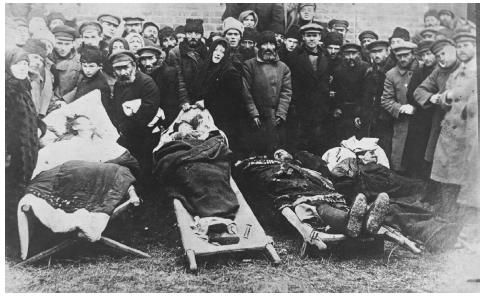
Public Domain, enotes.com
Survivors of a Ukrainian pogrom
Balfour Declaration
November 2, 1917
In a letter that British Foreign Secretary Balfour sent to Lord Rothschild, Britain offers to facilitate the growth of a national home for the Jewish people in Palestine with caveats that it will not prejudice civil and religious rights of the non-Jewish population there, or the political rights of Jews residing elsewhere. Chaim Weizmann is key to securing the letter. In 1922, the Declaration receives international legitimacy when its wording is incorporated into the League of Nations Mandate. Zionists fiercely defend the Mandate’s contents, while the Arab community in Palestine opposes it. (source)
Jerusalem Falls to the British
December 11, 1917
Four hundred years of Ottoman control of Palestine ends. British General Allenby takes the city and establishes a military administration until it is replaced by the British civilian administration backed by the League of Nations. Jerusalem becomes the seat of British rule until they depart in May 1948.
Ber Borochov Dies
December 17, 1917
Borochov, who is born in a shtetl (Jewish village) in the Ukraine, staunchly opposes Jews working exclusively in urban trades. Inspired by Marxism and Zionism, he is key to organizing Jewish brigades in Russia to defend the 1917 Revolution, as well as promoting the notion that the solution to the Jewish problem is emigration to Palestine. Borochov travels to the US in 1914 to promulgate Socialist Zionism and dies an untimely death shortly thereafter from pneumonia in Kiev, Ukraine.
Zionist Commission Arrives in Cairo
March 12, 1918
The new Zionist Commission, headed by Chaim Weizmann, goes to Palestine to assess the needs of the Jewish population there. Its ideas are presented to the British Foreign and Colonial office. The Commission's continued lobbying links it to British decision-making. The Zionist Commission was a precursor to the Palestine Zionist Executive set up in 1921 and the Jewish Agency set up in 1929.
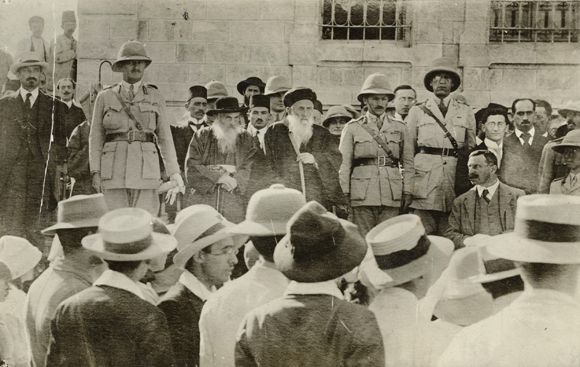
Public Domain, JDC Archives
Members of the Zionist Commission and the Jewish community at a reception for General Allenby
Hebrew University
July 14, 1918
Seven years after the cornerstone was laid, The Hebrew University is opened on Mt. Scopus on April 1, 1925. The University’s first Chancellor is Judah Magnes. Since Jordan controlled East Jerusalem after the 1948 war ended, Hebrew University temporarily moved its campus to Givat Ram. After the 1967 war, two campuses existed. It is ranked among the top sixty universities in the world.
Transactions in Land Temporarily Halted in Palestine to Protect the Peasantry Against Foreclosure on their Lands
November 18, 1918
World War I leaves Palestine in economic ruin and administrative chaos. Peasants had mortgaged lands or put them up as collateral for cash to buy their way out of military service. To prevent foreclosures, the occupying British administration closes the land market to all transactions. Due to pressure from Arab landowners wishing to raise capital for personal interests, it is opened again in October 1920.
Anwar Sadat Born in Egyptian Village
December 25, 1918
Sadat would become Egypt's third president. With US mediation, he negotiates several agreements with Israel in the 1970s, including the 1979 Peace Treaty -- helping to put an end to thirty years of sporadic hostilities.
Third Aliyah
1919 - 1923
The Third Aliyah (or wave of Jewish immigration to Palestine) consists mostly of Eastern European and Russian Jews, including some returnees who had left or been expelled by the Turks during WWI. This immigration begins around 1919, when Palestine is still under British military rule. Between 35,000 - 40,000 Jews come to Palestine during this period; unlike previous Aliyot, few left.
Feisal-Weizmann Agreement
January 3, 1919
Feisal, son of the Sharif of Mecca, and Chaim Weizman, Zionist diplomat and leader, sign an agreement of mutual respect and cooperation. Feisal agrees to a Jewish presence in the Holy Land as long as Arab independence is granted in the formerly Ottoman Middle East. The intention of cordial relations between Zionists and Arabs is shared by both sides, but subsequent division of the Middle East into mandates make its fulfillment impossible.
Nachman Syrkin Attends the Versailles Peace Conference as a Delegate
January 18, 1919
Born in Belorussia in 1868, Syrkin joins the Hovevei Tzion (Lovers of Zion) movement in Minsk, after his family relocates there while he is in high school. By 1888, Syrkin, a former student of psychology and philosophy, pioneers the concept of combining non-Marxist socialism with Jewish Nationalism. Bringing these concepts to the first Zionist Congress, he attends as a leader of the socialist Zionists. Syrkin’s most famous work, an article titled “The Jewish Problem and the Socialist Jewish State,” is published in 1898 in an Austrian socialist monthly.
Zionists Present Case at Paris Peace Conference
February 3, 1919
At the Paris Peace Conference in Versailles, more than two dozen Jewish representatives submit the demand of the Zionist Organization for the creation of the national home for the Jewish people. They call for "recognition of the Jewish people's historic title to Palestine and their right to reconstitute their National Home there."
Creation of the Central Zionist Archives
May 1919
Arthur Hantke, member of the Zionist Executive, asks the historian Georg Herlitz to serve as archivist in the offices of the Zionist Executive and create a "Zionist Archives" (later known as the Central Zionist Archives). The following year, the Archives in Berlin begin to accumulate material: files from the Central Zionist Offices in Vienna, Cologne, and Berlin, and from the head offices of the Jewish National Fund, as well as papers documenting the early activities of the Central Zionist Office in London. In this period, the "Archives of the World Zionist Organization" also begin to collect photographs, books, and periodicals dealing with Zionism and Land of Israel in the modern age.
Vaad Leumi is Founded
1920
Inspired by the idea of national autonomy sought after by Jewish minorities in Europe in the early 1900s, the Jews of Palestine elect a representative assembly in the beginning of 1920. This assembly forms a permanent committee known as the National Council to look after issues that related to internal community matters, such as education, religious affairs, and health care. The British administration gives legal recognition to the Vaad Leumi through a series of laws in 1926 and 1928. Its partner is a Jewish Agency, later "the" Jewish Agency that is recognized by the British as the official Zionist organization of the the Palestine Jewish community.The Vaad Leumi, Jewish Agency, and Histadrut contribute organizational cement to an immigrant population diverse in origins.
Haganah Founded
1920 - 1921
After Arabs riot against Jewish settlements and immigration in 1920 and 1921, the Jewish leadership in Palestine decides to establish a self-defense force to protect Jewish outposts. Self-defense is the Haganah's initial motto, but gradually in the mid-1940's it adopts a more offensive posture in protecting Jewish settlement and the coming state. It is the precursor to the Israel Defense Forces.
Founding of the German Nazi Party
February 24, 1920
The Nazi Party is formed in Germany.
A Nazi rally at Nuremberg, 1935
Battle of Tel-Hai
March 1, 1920
The Jewish Settlement of Tel-Hai, located in the Upper Galilee, is situated at a strategic juncture between British Palestine and French controlled Syria-Lebanon. The settlement is attacked by dozens of Arabs. The bloody battle becomes a symbol of the Zionist effort to control the land upon which they settled.
Yoseph Trumpeldor Dies in the Defense of Tel Chai
March 1, 1920
A pioneer and renowned soldier, Trumpeldor is one of the early thinkers to advocate for the establishment of Eretz Yisrael based on communalism and labor. A founder of He’chalutz and the first Jewish Legion in WWI, he loses his arm in the Japan-Russia war, later coming to Eretz Yisrael in 1912. Working as an agricultural laborer, he becomes a celebrated defender of the Upper Galilee, where he ultimately loses his life.
Nebi Musa Riots
April 4, 1920 - April 7, 1920
Following mounting communal Arab-Jewish tensions, violence brakes out between Arabs and Jews in the old city of Jerusalem surrounding the annual Nebi Musa festival. The British administration immediately and controversially withdraws police and soldiers from the old city, allowing violence to foment. In all, four Arabs and five Jews are killed. Palestinian leaders Hajj Amin al-Husayni and Aref el-Aref flee Jerusalem to Transjordan after the British accuse them of stoking the flames of the uprising. Over 200 others are put on trial as a result of the riots, 39 of whom are Jewish. This catalyzes early mistrust between the British, the Jews and Arabs in Palestine. Within two years, inexplicably, Hajj Amin is appointed to head the Supreme Muslim Council in Jerusalem.
San Remo Conference
April 19, 1920
The San Remo Conference in Italy affirms the British Mandate of Palestine. The terms set forth in the Balfour Declaration become the operative outline for Palestine's future.
Herbert Samuel Accepts Position as first High Commissioner of Palestine
April 25, 1920
Samuel governs as Britain's highest ranking official in Palestine until 1925. Zionists have high hopes that Samuel, a Jew, will help facilitate the development of their national home. He undertakes to rule in an even-handed fashion, seeking but failing to bring Arab notables into the administrative process. He allows both communities to develop their own social, political, and religious bodies.
The International Jew
May 22, 1920
Car manufacturer Henry Ford’s weekly paper, the Dearborn, Michigan Independent begins publishing a series of nearly 100 articles entitled “The International Jew.” The series includes reprints of the Russian anti-Semitic forgery, The Protocols of the Elders of Zion. Jewish Americans respond by boycotting Ford Motors. In 1927, under heavy pressure, Ford publicly apologizes for having published anti-Semitic propaganda in his newspaper. Louis Marshall, head of the American Jewish Committee, drafts Ford’s apology.
British Administration Commences
July 1, 1920
Appointed as Britain's highest ranking official in Palestine, Samuel governs there until 1925. As a Jew, Zionists have high hopes that he will help facilitate the development of the national home. Once governing, he undertakes to rule in an even-handed fashion. He seeks but fails to bring Arab notables into shaping Palestine's politics. Instead, he allows both communities to evolve their own social, religious, and self-governing bodies.
Solel Boneh is Established to Develop Housing and Infrastructure for the Growing Yishuv
October 17, 1920
Initially called “construction and public works,” Solel Boneh builds roads, housing, and public buildings, for new immigrants and the British administration. Established by the Histadrut, Solel Boneh has been a publicly traded company since 1961, with offices and branches all over the world. The company’s annual revenue today is nearly $2 billion.
US Presidential Election of 1920
November 2, 1920
43% of American Jewish voters vote for the Republican Warren Harding and 19% for the Democrat James M. Cox in the U.S. Presidential election.
Histadrut is Founded
December 4, 1920
The Histadrut, or General Federation of Laborers in the Land of Israel, is Israel’s unified trade union and workers organization. Founded in Haifa at the Technion, the Histadrut, in both the pre-state and Israeli periods, provides social and financial benefits to laborers and is likewise a major owner of businesses, industries, and financial institutions. Initially under the leadership of David Gurion (1921-1935), the Histadrut still plays an active role in the Israeli economy and labor movement today. In 2009, the Histadrut passes a contentious movement allowing migrant workers in Israel to join and receive benefits.
Rav Avraham Kook Becomes Chief Ashkenazi Rabbi of Palestine
February 24, 1921
Known for being a bridge builder between religious Zionism and secular Zionism, Rav Kook is born in Latvia in 1865, making aliyah in 1904. Going against the grain of many orthodox Jewish thinkers of the time, Kook interprets the secular nature of the Zionist movement as religiously legitimate, seeing the work of Zionist Jews building Eretz Israel as a mitzvah, or good deed, and a means to strengthening the international Jewish community.
Transjordan is Created out of the Palestine Mandate
April 21, 1921
Autonomy is given to Transjordan under Crown Prince Abdullah. Jewish settlement is outlawed there. After creation of Transjordan, Palestine is only 20% of its original size. Transjordan is governed through the British High Commissioner In Palestine.
Civilian Riots in Jaffa and in Jewish Colonies
May 1, 1921
Jews are attacked in Jaffa, in part at the instigation of Arab leaders (as concluded by the Haycraft commission report that investigates the unrest). A total of 47 Jews and 48 Arabs are killed. Jewish immigration is viewed as the flash point which sets off Arab attacks against Jews.
Yosef Haim Brenner is Murdered During Anti-Jewish Riots in Jaffa
May 2, 1921
One of Yishuv’s most prominent literary figures, Brenner, born in Russia in 1881, works to bring the center of Jewish literature from Europe to Palestine. Working as a writer, laborer and teacher in the Yishuv, Brenner’s famous works include the novels "Breakdown and Bereavement," "Min Hametzar" and "Around the Point." An early pioneer of the Hebrew language, Brenner likewise works to infuse Arabic, Yiddish, and Aramaic into his writing.
The Twelfth Zionist Congress
September 1, 1921 - September 14, 1921
Held in Carlsbad, Czechoslovakia, this is the first congress convened after WWI, and after the issuance of the November 1917 Balfour Declaration. Ratification of the British Mandate for Palestine aimed at guiding the establishment of the Jewish national home is welcomed by the Congress. Chaim Weizmann, elected president of WZO, replacing Warburg, takes part in discussions about issues of Zionist-Arab relations after the Arab riots in Palestine in 1920. The Congress likewise briefs on the activities of Keren HaYesod, the financial arm of the WZO, which had been established a year earlier in London.
Pinhas Rutenberg Receives a Concession from the British to Build an Electrical Power Plant in Palestine
September 21, 1921
Born in Russia in 1879, it is Rutenberg’s dream and perseverance that bring great economic enterprise to the Yishuv. In 1921 he founds the Palestine Electric Company. Active in the defense and the politics of the Yishuv, and serving twice as Chairman of the Yishuv National Committee, Rutenberg is the pioneer of electrical power in Mandate Palestine.
The Hydroelectric Power Station at Naharayim
Hajj Amin al-Husayni Appointed Mufti of Jerusalem
December 1921
High Commissioner Samuel appoints Hajj Amin to lead the Muslims in Palestine, despite his third place finish in the election for the position. As a fierce nationalist, anti-Zionist, and anti-Semite, Hajj Amin instigates violence against Zionism and Jewish development in 1921, 1929, and in 1936-39. He aligns with the Nazis during World War II, even helping organizing a Muslim SS unit in the Balkans. His extremism drowns out all moderate Arab voices seeking compromise with Zionism.
1922 Jewish population
January 1, 1922
The World Jewish population is 14,400,000
Supreme Muslim Council Established in Palestine
January 9, 1922
The leadership of the Council is controlled by Hajj Amin al-Husayni. He appoints preachers and controls large sums of money from property rents and a large annual subvention from the British administration. He uses the Council to wield influence through cronyism and nepotism. His dominance over the Council and as Grand Mufti of Jerusalem radicalizes Palestinian Arab politics. He opposes any effort to initiate Palestinian participation in self-government, lest it diminish his control over Palestinian Arab politics.
A. D. Gordon Dies
February 22, 1922
Born in Russia in 1856, Gordon makes aliyah in 1904. An early member of Hibbat Zion (a semi-communal farming community in central-Israel), Gordon actively supports the Labor Zionist cause, working in the fields of Palestine despite his old age and lack of manual labor skills. A religious man dedicated to building the Jewish state, Gordon is credited as being an early spiritual leader of Practical and Labor Zionism.
Jewish Quota Established at Harvard University
March 13, 1922
As the number of Jewish students at Harvard surpasses 21%, a quota limiting the number of Jews at the college is imposed. Harvard President A. Lawrence Lowell explains the decision is intended to eliminate resentment towards Jews that is prevalent across that nation. Numerous US colleges and universities adopt similar quota systems restricting Jewish enrollment.
HMG (Churchill) White Paper on Palestine
July 1922
The Churchill White Paper is issued, indicating that Britain will give effect to the Balfour Declaration. It declares that Jewish immigration to Palestine will be determined by the ambiguously defined "economic capacity of the country to absorb new immigrants." (source)
League of Nations, the Mandate for Palestine
July 24, 1922
The League of Nations adopts articles for Palestine’s administrative and political management (The Articles of the Mandate), which greatly favor the Zionists over the Arab population in Palestine. (source)
Fourth Aliyah
1923 - 1929
Different from the previous Jewish immigration's to Palestine, this Aliyah is driven by economic forces, primarily in Poland, and the restrictions on immigration to the United States in 1924. Improved economic conditions in Palestine make it more attractive to immigrants. While 67,000 immigrants come during this period, several thousand leave in 1927 due to economic hardships. Most of those who arrive invest their own savings in new enterprises indicating a commitment to the Zionist enterprise.
Betar Zionist Party Established
1923
Vladimir Jabotinsky establishes the revisionist Betar party in Riga, Latvia. It is the ideological precursor to the Herut and Likud political parties in modern Israel. Betar focuses on establishing a Jewish military defense force. Jabotinsky publishes his "Iron Wall" where he recognizes that the Arabs in Palestine will vigorously oppose Jewish presence and growth.
Shimon Peres Born in Poland
August 1923
Shimon Peres, after serving in multiple Israeli governments, would become Israel’s 8th Prime Minister and 9th President. He is the only person to have held both positions. Peres dies in 2016.
The Thirteenth Zionist Congress
August 6, 1923 - August 8, 1923
Convened in Carlsbad, Czechoslovakia, the Congress discusses details of the Palestine Mandate and particularly the prerogatives of the Palestine Zionist Executive (PZE) that guides Jewish immigration and settlement in Palestine. Inheriting the work of the Zionist Commission, 1918-1921, the PZE is headed by Colonel Frank Kisch. It will change its name officially to the “Jewish Agency” in 1929, but already is recognized by the British as that Jewish Agency that represents Zionist interests in Palestine. A proposal to include non-Zionists in the PZE is rejected by the congress.
Golan Heights Given to Syria
September 29, 1923
Britain gives the Golan Heights to the French Mandate of Syria. In the late 1930s, Zionist real estate agents attempt to buy the Heights from Syrian tribal leaders. The four major tributaries of the Jordan River (Hasbani, Banias, Dan, and Iyon) originate in Golan and adjacent areas of South Lebanon and Mount Hermon.
Arab Agency Proposal is Rejected by Arab Delegation
October 12, 1923
The Jewish Agency had been given official recognition by the League of Nations to organize Jewish communal needs. In an effort to create some balance with the Arab community, High Commissioner Samuel outlines a plan to establish an Arab Agency in Palestine to mirror the Jewish Agency as a non-legislative body. Much like the Jewish agency, the British hope that an Arab Agency would evolve into semi-official Arab political participation in Mandate decision-making. The plan, however, is rejected by the Arab elite because facilitating the Jewish national home is at the heart of British presence in Palestine.
Menachem Ussishkin Seeks Greater JNF Autonomy to Make Land Acquisition Decisions to Escape Plodding Nature of Jewish Agency Officials
January 29, 1924
One of the founders of the Hibat Zion Movement and an adherer to Herzl’s Political Zionism movement, Ussishkin (1863-1941) makes aliyah in 1919. He likewise participates in the Paris Peace Conference in 1919 where he promotes the establishment of a Jewish homeland in Eretz Israel. He fights to purchase available land offered by Arab sellers, often seeking to sign contracts for long duration's even before funds are at hand to make purchases. He travels frequently to raise funds for the JNF; in 1929-1930 he secures a large gift from Canadian donors to purchase the lands that became the kibbutzim around Kfar Vitkin, located along the Mediterranean coast.
US Government Immigration Act or National Origins Act
May 26, 1924
In reaction to post WWI communist witch hunts in the US, rising tides of nativism, and the economic problems of the early 1920s, the US limits the annual number of immigrants from any one country to 2% of the number from that country already living in the US. The House Judiciary Committee in the early 1920s had heard testimony that certain races were “inferior.” It is aimed at limiting admission of immigrants from Asia, south and eastern European. Jews are particularly effected by the new restrictions, causing many to go seek refuge elsewhere including Canada, south American, South Africa, and Palestine.
1924 US Presidential Election
November 4, 1924
51% of American Jewish voters vote for the Democrat John Davis and 27% for the victorious Republican Calvin Coolidge in the US Presidential election.Third party candidate Robert M. La Follette siphons off some Jewish votes from Davis.
Lord Balfour Attends the Opening Ceremony of the Hebrew University of Jerusalem
April 1, 1925
Arthur James Balfour (1848-1930) is a British statesman, who serves as Prime Minister of Britain from 1902-1905 and Foreign Secretary from 1916-1919, to name just two of his roles in the British government. The 1917 Balfour Declaration, his most famous contribution to the Zionist movement, is a letter sent to Baron Walter Rothschild, expressing his support of the development of a Jewish homeland in Palestine. His support for Jews emanates from what he perceives as both a Christian and political obligation to right the inexcusable, historical injustices done to them. The contents of the Balfour Declaration are given international legitimacy by the League of Nations, and incorporate support of a Jewish national home into the structure of Palestine’s governance.
The Fourteenth Zionist Congress
August 18, 1925 - August 31, 1925
Convened in Vienna, issues of private enterprise, vis-à-vis socialists’ activities in Palestine, are discussed by the congress in light of a significant wave of immigration from Poland, which begins to constitute the beginning of a Zionist middle class in the country. To date, the majority of Jewish immigrants to Palestine had come with a socialist tinge to their ideology and work. The Revisionists, headed by Ze’ev Jabotinsky attend the Congress for the first time and demand more activist policies by the Zionist Movement.
Field Marshal Lord Plumer Is Appointed High Commissioner of Palestine
August 25, 1925
Born in 1857, Field Marshal Lord Plumer enters the British Army in 1876 as a sub-lieutenant in the 65th Foot Regiment. A decorated officer who is promoted to the rank of General during WWI, Plumer goes on to serve as governor of Malta from 1919-1924. From 1925-1928, Plumer assumes the position of Palestine’s second British High Commissioner. Plumer’s tenure is uneventful, aside from seeing an increase in net Jewish emigration in 1927. He is impartial toward both Zionist and Arab national aspirations.
Ze’ev Jabotinsky Founds Ha-Zohar, a Revisionist Zionist Alliance
August 27, 1925
Jabotinsky is born Vladimir Yevgenyevich Zhabotinskyin in Odessa in 1880. He openly critizes the Zionist leadership for being too passive while British officials in Palestine take on pro-Arab viewpoints. He does not accept Chaim Weizmann’s leadership of the Zionist movement. Thus at the 14th Zionist Congress in Berlin, he forms Ha-Zohar. He, like Herzl, four decades earlier, was a lone wolf, trail blazer in forming Revisionist Zionism. During his career, he founds three other pivotal organizations: The New Zionist Organization, the youth movement, Betar, and the Irgun’s Zvai Le’umi underground organization. He becomes an ideological mentor to Menachem Begin, Israel’s Sixth Prime Minister.
1927 Jewish Population
January 1, 1927
According to a 1927 survey, there are Jews in 9,712 US towns and rural areas. There are also 4,228,000 Jews, 17,500 Jewish organizations, and 3,118 congregations in the United States.
The Fifteenth Zionist Congress
August 30, 1927 - September 11, 1927
Convened in Basle, Switzerland, the Congress considers the economic crisis in Palestine in light of the boom of new immigrants and the shortage of jobs. Weizmann is re-elected president of the WZO and Henrietta Szold is the first woman elected to the Zionist Executive. Arthur Ruppin and Weizmann both present their opinions on how to alleviate economic crises and the Congress celebrates its 30th anniversary.
Sir Harry Charles Luke is Appointed Acting High Commissioner of Palestine
July 21, 1928
Born in 1884, Sir Harry Charles Luke receives his first position as a civil servant for the British Government as a private Secretary to the Governor of Sierra Leone in 1908. Serving as a naval commander during WWI, Luke is appointed Assistant governor of Jerusalem (1920-24), working with Ronald Storrs. He investigates the Arab riots against Jews in Jaffa in 1921 and is Acting High Commissioner during the 1929 Hebron/Jerusalem Arab-Jewish disturbances.
Habimah National Theater
November 29, 1928
Founded initially as a Hebrew Theater in Vilna in 1903 (where it flounders), Habimah National Theater's Land of Israel debut is on November 29, 1918. In addition to presenting classical plays, it produces original Hebrew plays. In the 1960's, with Israeli government support, it is recognized as the National Theater of Israel.
The Sixteenth Zionist Congress
July 28, 1929 - August 10, 1929
Convened in Zurich, Switzerland, immigration and economic issues are again discussed. Commemorating the 25th anniversary of Herzl’s death, the Congress approves enlarging the Jewish Agency to include non-Zionists. The Congress, with Albert Einstein in attendance, concludes with the election a new Zionist Executive, joined by two Mizrahi (religious Zionist) representatives (Rabbi M. Berlin and A. Barth), two labor representatives (S. Kaplansky and Y. Sprinzak), and Arthur Ruppin.
Jews Massacred in Hebron
August 23, 1929
The Hebron massacre, in which 67 Jews are killed, is part of a larger wave of riots and clashes between Arabs and Jews. The riots begins over an incident at the Western Wall, which set off Arab mobs and quickly escalates into violence. The British investigation begins an inquiry led by Sir Walter Shaw. The death of so many Jews in Hebron (isolated as it was from other Jewish enclaves) forces the Zionists to buy land in contiguous blocks in valley and coastal regions and not in the hill regions of Palestine.
1930 British High Commissioner John Chancellor Issues 90-Page Dispatch Presenting Harsh Anti-Zionist Views
January 17, 1930
Chancellor argues strenuously in favor of the Arabs over the Zionists. So vexed by Jewish growth, he suggests Draconian legislation to protect the Arab peasantry; Chancellor fails to have the Mandate stopped and turned around in favor of the Arab community. His suggestions for restrictions on Jewish land purchases and immigration are not implemented, but will be legally enforced through the 1939 White Paper. Arabs’ hopes for a policy change are dashed; Zionists are euphoric that they are able to push back against staunchly pro-Arab British bureaucrats, thereby allowing unprecedented growth in the 1930's of the Jewish National Home.
Shaw Commission Report Issued
March 1930
As a result of the violence in August 1929, the British establish a committee of inquiry led by Sir Walter Shaw. Shaw identifies Arab frustration over Arab land sales and Jewish immigration as the root of the unrest. It blames the violence on the Arabs, but acknowledges their grievances. The report influences the British to consider regulations to slow the Jewish state’s development that are implemented only a decade later.
Hafez al-Assad is Born
October 6, 1930
Assad would rise in the Ba'ath Party bureaucracy and the Syrian military. By the time Syria loses the Golan Heights to Israel in the June 1967 war he is Defense Minister. In 1970 he becomes Syria's President, remaining in office until his death in June 2000. He collaborates with Egyptian President Sadat in attacking Israel on October 6, 1973. He signs a Military Disengagement Agreement with Israel in May 1974. Though he refuses to recognize the state of Israel, he seeks the return of all of the Golan Heights to Syrian sovereignty.
Hope-Simpson Report and Passfield White Paper Issued
October 21, 1930
After the 1929 Arab riots against the Jews, the British commissiones Sir John Hope Simpson to look into the underlying causes of the disturbances. He finds that Jewish land purchase/Arab land sales, Jewish immigration, and the failure to establish self-governing institutions contribute to the unrest. Hope-Simpson is heavily influenced by the anti-Zionist attitudes of other British officials. The Passfield White Paper, issued the same day, uses Hope-Simpson's findings to suggest restrictions on Jewish land purchase and immigration restrictions. These are implemented ten years later with the May 1939 White Paper.
British Statesman Ramsay MacDonald Writes a Letter of Explanation to Chaim Weizmann Reducing Proposed Threats to Jewish Growth in Palestine
February 13, 1931
As a response to violent riots between Arabs and Jews occurring in Palestine in 1929, the British Government issues the Passfield White Paper in October of 1930. Decidedly anti-Zionist, containing restrictions on Jewish immigration and settlement development, the White Paper also criticizes Zionist institutions and claims they are negatively impacting the economic development of the Arab population in Palestine. In England, a Zionist campaign against the white paper ensues, resulting in British official, Ramsay MacDonald personally writing a letter to Zionist leader, Chaim Weizmann. In the letter, he explains the British government’s justification for the white paper and their increasingly anti-Zionist position (source).
President Hoover Issues Statement Reducing Immigration to the United States
March 1931
In a continuing effort to limit foreign immigration to the United States, the executive branch applies rigorous exclusion to immigrants who are liable to become public charges; potential immigrants need funds guaranteed to them by a sponsor already in the US. In 1930, 241,770 immigrants come to the US; after the imposition of consular restrictions, the numbers falls to 97, 139 in 1931, to 35,576 in 1932, and to 23,068 in 1933. The period of 1931-1936 are the years of the largest Jewish immigration to Palestine.
The Seventeenth Zionist Congress
July 15, 1931 - July 30, 1931
Convened in Basle, Switzerland, the Congress is engulfed with fierce debate towards Weizmann’s policy of cooperation with the British Mandate authorities, especially since their issuance of an anti-Zionist White Paper based on the recommendations of British Colonial Secretary Lord Passfield. Immigration and Jewish land purchase restrictions are to be applied and stop the growth of the Jewish national home. Since these are the core ingredients in fulfilling the Zionist objective, Weizmann is considered inept. The opposition to Weizmann is led by Ze’ev Jabotinsky, who calls for the creation of a Jewish State on both sides of the Jordan River. Weizmann tenders his resignation and is succeeded by Nahum Sokolov.
Canadian Government Restricts Immigration
1932
In the early 1930's, soaring unemployment from depression reaches 30% causing the Government to restrict immigration. Only Americans, British subjects and farmers with their own capital are allowed to immigrate into Canada. From 1928 to 1933 for example, immigration precipitously drops from 166,783 to 14,382 in 1933. Like the US and elsewhere in the world, Jews find it extremely difficult to find a safe haven from persecution. As compared to previous years, Jewish immigration to Palestine soars in the 1930's.
Writer Aharon Applefeld is Born
February 16, 1932
Aharon Applefeld, an Israeli author, professor and Holocaust survivor arrives in Israel in 1946 after fleeing from Romania. Often drawing upon his childhood experiences, his works depict European Jews in the World War II era. Titles such as "For Every Sin," "Tzili," "Iron Tracks" and "The Healer" gain him notoriety as a writer, catalyzing his receipt of the Bialik Prize in 1979 and the Israel Prize in 1983.
1932 US Presidential Election
November 8, 1932
82% of American Jewish voters vote for the Democrat Franklin D. Roosevelt and 18% for Herbert Hoover, the Republican incumbent in the US Presidential election.
Latin American Nations Impose Stringent Immigration Restrictions on Jewish Refugees
1933
Latin American nations previously accepting of European Jewish immigrants deny entry to Jews despite extreme conditions in Europe. Between 1933-1945 only 84,000 Jewish refugees are admitted into Latin American nations, less than half the number allowed in the previous 15 years. Between 1947-1953, an additional 20,000 displaced European Jews emigrate to Latin America, most settling in Argentina. In the post war period, Argentina and other south American countries become safe havens for Nazi officials escaping prosecution for war crimes.
Aliyah Bet
1933 - 1948
Aliyah Bet, illegal or secret Jewish immigration to Palestine, begins in earnest. Zionists circumvent British limitations on Jewish population in Palestine through clandestine immigration as doors to Jewish immigration are restricted or closed in late 1930's and during World War II.
Hitler Appointed Chancellor of Germany
January 30, 1933
Adolf Hitler is appointed Chancellor of Germany, then a nation with a Jewish population of 566,000. The German Parliament passes the Enabling Act, giving Hitler dictatorial authority. The Nazis issue a decree defining a non-Aryan as "anyone descended from non-Aryan, especially Jewish, parents or grandparents. One parent or grandparent classifies the descendant as non-Aryan...especially if one parent or grandparent was of the Jewish faith."
Cordell Hull Oversees State Department with Profoundly Anti-Semitic Colleagues
April 3, 1933
Appointed Secretary of State by FDR, Hull remains in the post until December 1944. From this position he has unique capacity to keep the immigration doors to the US closed. With the head of the Western European Division at State, Jay Pierrepont Moffat and other officials, Wilbur Carr and William Phillips, attitudes toward Jews are more than advocacy of immigration restrictions, they range from polite to racial anti-Semitism. Well into the 1940's, refusal to admit European Jewish refugees is systematically ingrained and personally reinforced by state department inaction.
Arlossoroff Assassinated
June 16, 1933
Labor leader and head of the Political Department of the Jewish Agency Chaim Arlosoroff is murdered on a Tel Aviv beach. Controversy ensues amidst competition for leadership of the Jewish Agency between the right wing Revisionists and the left leaning laborites. The murder remains unsolved, but shows that Zionists could and would differ violently over direction, pace, and operation of their national movement. Shortly after the assassination, David Ben-Gurion becomes head of the political department of the Jewish Agency (essentially the political leader of Zionism in Palestine).
Protection of Cultivator’s Ordinance – British Remain Unable to Stop Arab Landowners from Selling Lands and Displacing their Tenants
August 1933
The British naively believe that they can control economic and social forces in the land sphere. They want to please Arab landowners, Jewish buyers, and keep peasants from becoming landless, even when peasants receive ample compensation to quit their lands before a sale's completion. The 1933 edition of the law is supposed to be the most sweeping of more than half a dozen attempts at guaranteeing alternative land to a tenant before a sale's completion. Seeing a chance to put more money in their own pockets, tenants hold their landlords and land-brokers “hostage,” making inflated demands for more money to leave lands, thereby driving up land prices. Whenever Arab landowners seek out Jewish buyers, or vice versa, this legislation and others fail to contain the impetus for either Arab personal need or Jewish national objectives.
The Eighteenth Zionist Congress
August 21, 1933 - July 4, 1933
Convened in Prague, the meetings are held just after the Nazis come to power in Germany. Economic issues dominate discussions, with insufficient capital available to ‘grow’ the national home. The consequences of the assassination of Chaim Arlosoroff, the Labor leader, who led the Jewish Agency in Palestine, are discussed, with heated undertones of tensions between the Labor socialists and the capitalist Revisionists. The Labor socialists become the largest faction.
Publication of "Judaism as a Civilization"
1934
Mordecai Kaplan publishes "Judaism as a Civilization: Toward a Reconstruction of America-Jewish Life," one of the most widely discussed and influential Jewish books of the twentieth century.
Jabotinsky and Ben-Gurion Meeting in London
October 10, 1934
The Revisionist and Labor leaders meet to reduce the verbal anger and physical attacks aimed at each other's Zionist political stream. Matters relating to allocation of immigration certificates and deepening divisions between their adherents are partially resolved, but their respective followers want little compromise with the other. Tensions between Labor Zionism and Revisionism continue, but are quickly submerged by protracted Arab violence against Jewish development (1936-1939), the Nazi rise in Europe, and emigration restrictions imposed against Jews worldwide. Internal Zionist tensions resurface in Palestine in the 1940's and are only resolved when the state is established in 1948.
David Ben-Gurion becomes head of the Political Department of the Jewish Agency
1935
(Listen to) Ben-Gurion's 1956 interview with Edward R. Morrow. Ben-Gurion will head the Jewish Agency until Israel is established in 1948, and remain almost continuously as prime minster until 1963.
Mosul-Haifa Pipeline Opens
January 4, 1935
The British open a pipeline between the Mosul oilfields in Iraq and the port of Haifa in Palestine; the British have another route to deliver oil to their oil-hungry naval fleets. Once Israel was established in 1948, the pipeline is closed.
Rabbinical Council of America Gains Prominence
February 2, 1935
The Rabbinical Council of America, a merger of the Rabbinical Association of the Rabbi Isaac Elchanan Theological Seminary and the Rabbinical Council of the Orthodox Union, becomes the central organization of American-trained Orthodox rabbis.
Bremen Incident
July 26, 1935
Demonstrators in New York board the German ship Bremen and tear the swastika down from its mast. Magistrate Louis Brodsky dismisses charges against the demonstrators, saying that the sight of the “pirate flag” naturally incited them.
The Nineteenth Zionist Congress
August 20, 1935 - July 4, 1935
Held in Lucerne, Switzerland, while the Nazi Party consolidates power and systematic and passionate anti-Semitism grows in Germany, the Congress discusses rescuing German Jews and bringing them to Palestine. With the Labor faction still the majority, a coalition is established that allows Weizmann to return to his position as President of the WZO. David Ben-Gurion is elected to the Executive of the Jewish Agency during the Congress; the Revisionists have seceded from the WZO and do not attend the congress. The congress is held as the annual increases of Jewish immigration to Palestine reaches their zenith in 1993, 1934, and 1935.
Nuremberg Laws Introduced in Germany
September 15, 1935
The Nuremberg Race Laws severely curtail Jewish civil rights.
Arab Rebellion in Palestine Breaks Out
April 15, 1936
Major Arab physical attacks against Jewish and British encampments and settlements are sustained. Arab leaders in countries surrounding Palestine ask for an end to the violence, to further their own parochial national interests. Jews living in Arab lands, especially Iraq, experience an anti-Jewish backlash from events in Palestine. The disturbances continue on an off until early 1939. During these three years, the death toll includes some 250 British administrators and security forces, 400 Jews and over 5,000 Arabs. The uprising ultimately results in the 1939 White Paper, acquiescing to Arab demands to curtail Jewish immigration and land transfers between Jews and Arabs in Palestine.
Mufti Rejects British High Commissioner Wauchope’s Overture for a Legislative Council for Palestine Self-Government
May 5, 1936
Born in 1874, Arthur Grenfell Wauchope becomes Palestine’s High Commissioner in 1931. He is considered fair by both Jews and Arabs and becomes a proponent of applying a measure of self-government through a legislative council in early 1936. The British invite Arab representatives to London to discuss the proposal. Rather than go the route of a Legislative Council to obtain their objectives, the Mufti and others in the Arab elite organize the general strike, and on May 5, 1936 refuse to attend the London conference, despite “a strong section of the population” wanting self-rule. Wauchope leaves Palestine in 1938 in the midst of the Arab violence and uncertainty of Palestine’s political future.
1936 US Presidential Election
November 3, 1936
85% of American Jewish voters vote for the Democrat Franklin D. Roosevelt and 15% for the Republican Alf Landon in the US Presidential election.
Professor A.B. Yehoshua is Born
December 9, 1936
Avraham B. Yehoshua, an Israeli writer and professor of literature, is an active participant in the Israeli Peace movement. Known for his introspective fictional writings, his famous works include "The Lover," "Five Seasons," "A Woman in Jerusalem," "A Journey to the End of the Millennium" and "The Liberated Bride." He is awarded the prestigious Bialik prize in 1989, the Israel Prize in 1995 and the Los Angeles Times Book Prize in 2006.
Israel Philharmonic Orchestra
December 26, 1936
Established in 1936 by the Polish violinist Bronislaw Huberman, the Palestine Philharmonic Orchestra liberated 90 European, Jewish musicians in danger of falling victim to the Holocaust. The guest conductor for the opening concert in Tel-Aviv is Arturo Toscanini. Now the Israel Philharmonic Orchestra, it retains its reputation as one of the best philharmonic orchestras in the world.
The Columbus Platform
1937
The Columbus Platform provides a new set of guiding principles for American Reform Jews, placing emphasis on Jewish peoplehood, religious practice, and the establishment of Palestine as a Jewish homeland.
British High Commissioner Fiercely Opposes Efforts of Some British officials, Particularly Those of Orde Wingate to Establish Jewish Armed Units in Palestine
January 26, 1937
Orde Wingate, a Christian, career British officer (1903-1944), is known for his support of the national aims of Zionism. He is fiercely anti-Arab and anti-Islamic in outlook. While stationed in Palestine during the British Mandate, he takes it upon himself to organize Jewish forces that concentrate on counter-terrorism tactics. He seeks to destroy Arab terrorist gangs as they attacked Jewish and British installations during the 1937-1939 period. His philosophy that “a good offense is the best defense” has a positive impact upon the developing ethos of the Zionist self-defense forces, or the Haganah. Later in Burma and elsewhere he organizes local groups to fight terrorist insurgencies.
British Royal Commission Report Published
July 7, 1937
The British Royal Commission (Peel) Report investigates unrest in Palestine and suggests the physical division or partition of Palestine into Arab and Jewish states. Partition is not adopted. Jewish organizations contemplate implications of partition for Zionist future. (source)
League of Nations Accepts the Peel Commission Report
August 2, 1937
The Peel Commission recommendation for a two state solution is accepted by the League of Nations. It is considered a viable solution to the communal conflict in Palestine. (source)
Andrews (British official) is Killed
September 26, 1937
On his way to a prayer service in Nazareth, Arab gunmen assassinate Lewis Andrews, the British district commissioner for the Galilee. A friend of the Jews, Andrews is a prime target for Arab militant groups during this period of the 1936-1939 Arab uprising in Palestine. The assassination further catalyzes the British sense of urgency in resolving the seemingly irreconcilable conflict between Jews and Arabs.
The Twentieth Zionist Congress
August 3, 1937 - August 16, 1937
Convened in Zurich, the congress debates the conclusions of the British Peel Commission, which suggests the partition of Palestine, thereby creating a Jewish state, the Zionist objective. The Congress decides to reject the idea because it sees the projected Jewish state as too small. The congress is held during the intensification of Arab riots aimed against the British for supporting the national home and the Zionists for building their presence there. Zionists decide to pursue further negotiations on the future borders of a Jewish State, while they continue to buy land and bring immigrants to the country, however at a much slower pace than in the early part of the decade.
Jewish National Fund: the Significance of Land Purchase
December 31, 1937
Eliahu Epstein records a JNF meeting called to shape land purchase policies. His notes reveal a flood of Arab offers to sell land that outstrips Zionist purchasing capacity, allowing Zionists to pick and choose potential acquisitions according to strategic needs. (source)
American Jewish Public Opinion in 1938
1938
A U.S. public opinion poll reveals that 60% of Americans believe the persecution of Jews in Europe is either entirely or partly their own fault.
Nazis Annex Austria
March 12, 1938
Nazi troops enter Austria, which has a population of 200,000 Jews, mainly living in Vienna. At the Evian Conference in France, delegates from 32 countries take no action to aid European Jewry. The Nazis enact further legal restrictions against Jews.
Albert Einstein Praises Zionism but Opposes Partition of Palestine
April 17, 1938
“Judaism owes a great debt …to Zionism. [It] revived among Jews the sense of community. This productive work in Palestine, to which self-sacrificing Jews throughout the world have contributed, has saved a large number of our brethren from direst need. Everyone knows that the riots are artificially fomented by those directly interested in embarrassing not only ourselves but especially England [and] that banditry would cease if foreign subsidies were withdrawn. …I should much rather see agreement with the Arabs on the basis of living together in peace than the creation of a Jewish state… a Jewish state with borders, an army, a measure of temporal power no matter how modest…. I am afraid of the inner damage Judaism will sustain --from a narrow nationalism within our ranks, which we have already had to fight strongly even without a Jewish state.” Albert Einstein, speech to The National Labor Committee for Palestine delivered at the Commodore Hotel, New York, April 17, 1938.
Fair Labour Standards Act Passed
June 25, 1938
The five-day work week is established by the Fair Labor Standards Act. This allows American Jews to observe the Sabbath without having to miss work.
Munich Agreement Reached
September 30, 1938
British Prime Minister Chamberlain, French Prime Minister Daladier, Benito Mussolini, and Adolf Hitler agree to forestall war; the British and French (ignoring treaty obligations) acquiesce to Hitler's territorial ambitions regarding the Czech Sudetenland. Chamberlain promises "peace in our time" as a result of the agreement; in fact, his submission to Hitler's audacious gamble provides political capital, geographic advantage, and Czech munitions works that will later help to power the Nazi war machine.
Jews are Determined - Arabs in Palestine Will Lose it to the Jews
September 30, 1938
At a secret meeting of Arab notables from Lebanon, Syria, and Transjordan, Izzat Darwazzah, a leading Palestinian politician, issues a dire warning about Palestine’s future: “There is no boundary to the aspirations of the Zionists. If until September 1937, the Jews spoke about building a National Home in Palestine; today they are already talking about the establishment of a Jewish State in part of Palestine.” Darwazzah warns that if the Arab states refuse to help the Arabs in Palestine, they “will be totally neglected and forgotten.” Arab states do not come to the aid of Palestinians. And while their own leadership remains fragmented and virtually dysfunctional, Zionists continue to slowly build their state. (source)
Kristallnacht
November 10, 1938
Nationwide attacks against Jews, their synagogues, and business occur in Austria and Germany. Jewish institutions are burned and looted in a systematic fashion.
Holocaust
1939 - 1945
The Nazis murder six million Jews in Europe. This has a catalytic effect on the establishment of Israel and its future policies. During this period, the Palestine Arab community remains socially and economically in disarray. Some of their leadership, such as Mufti Hajj Amin al-Husayni, align with the Nazis.
132685497
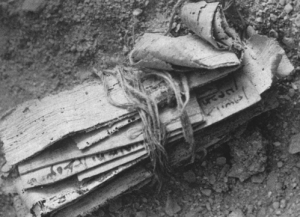
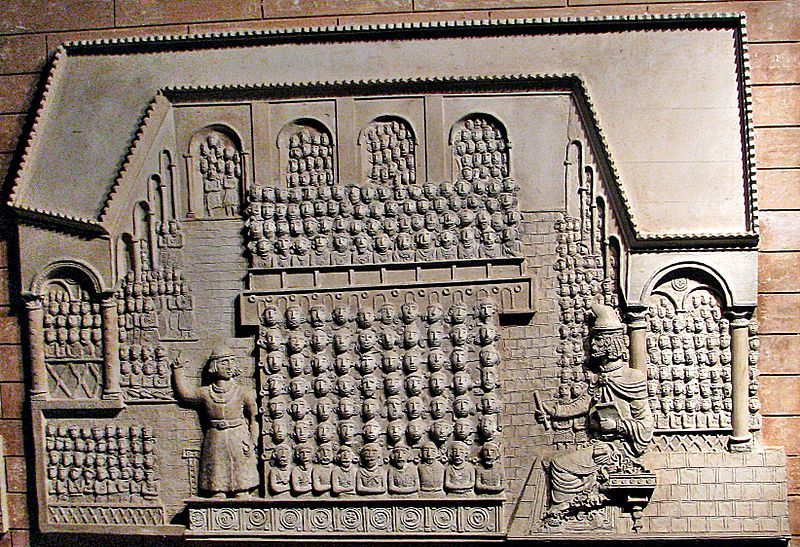

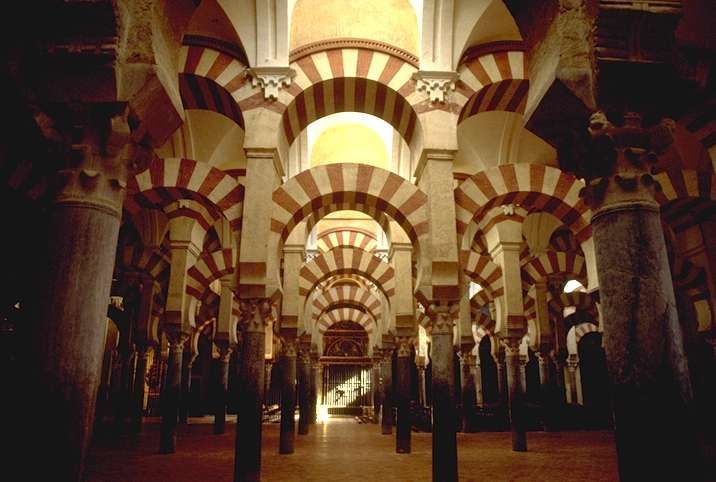
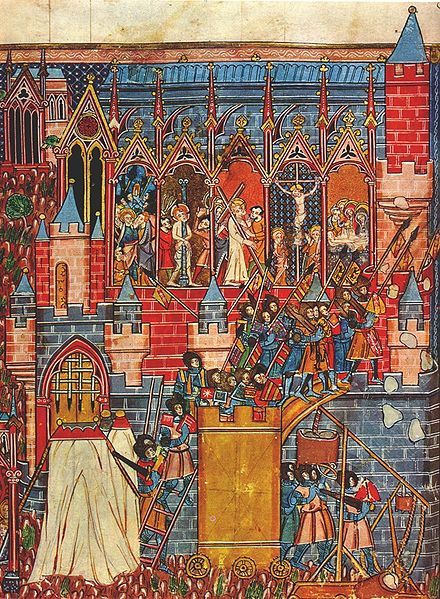
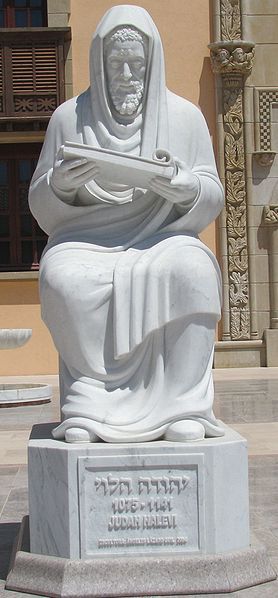

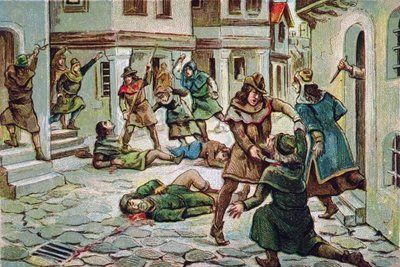
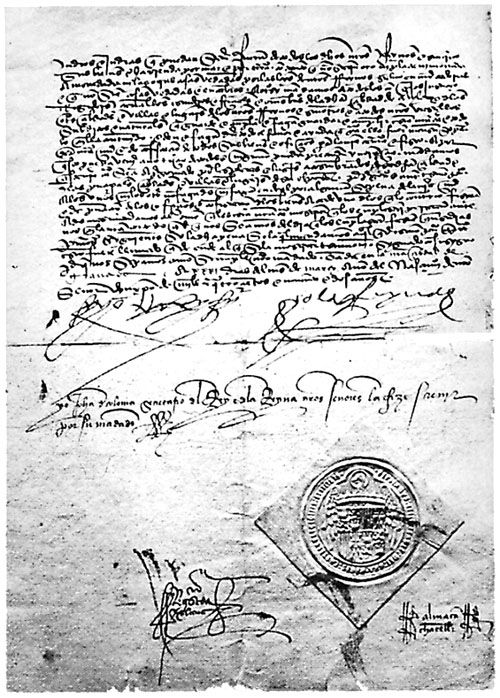
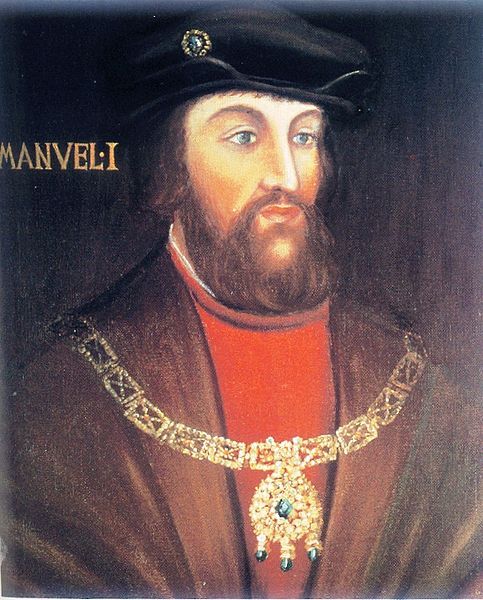
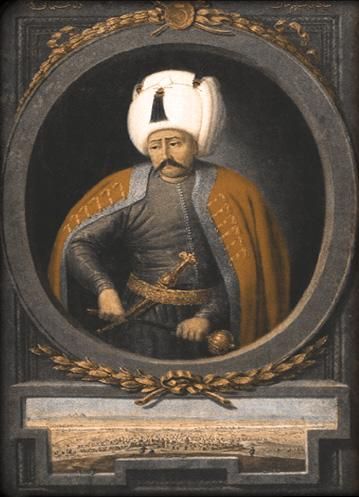
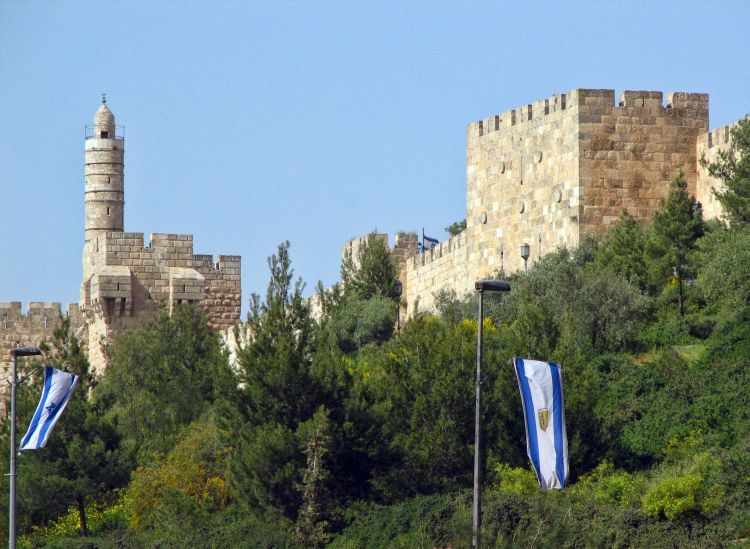

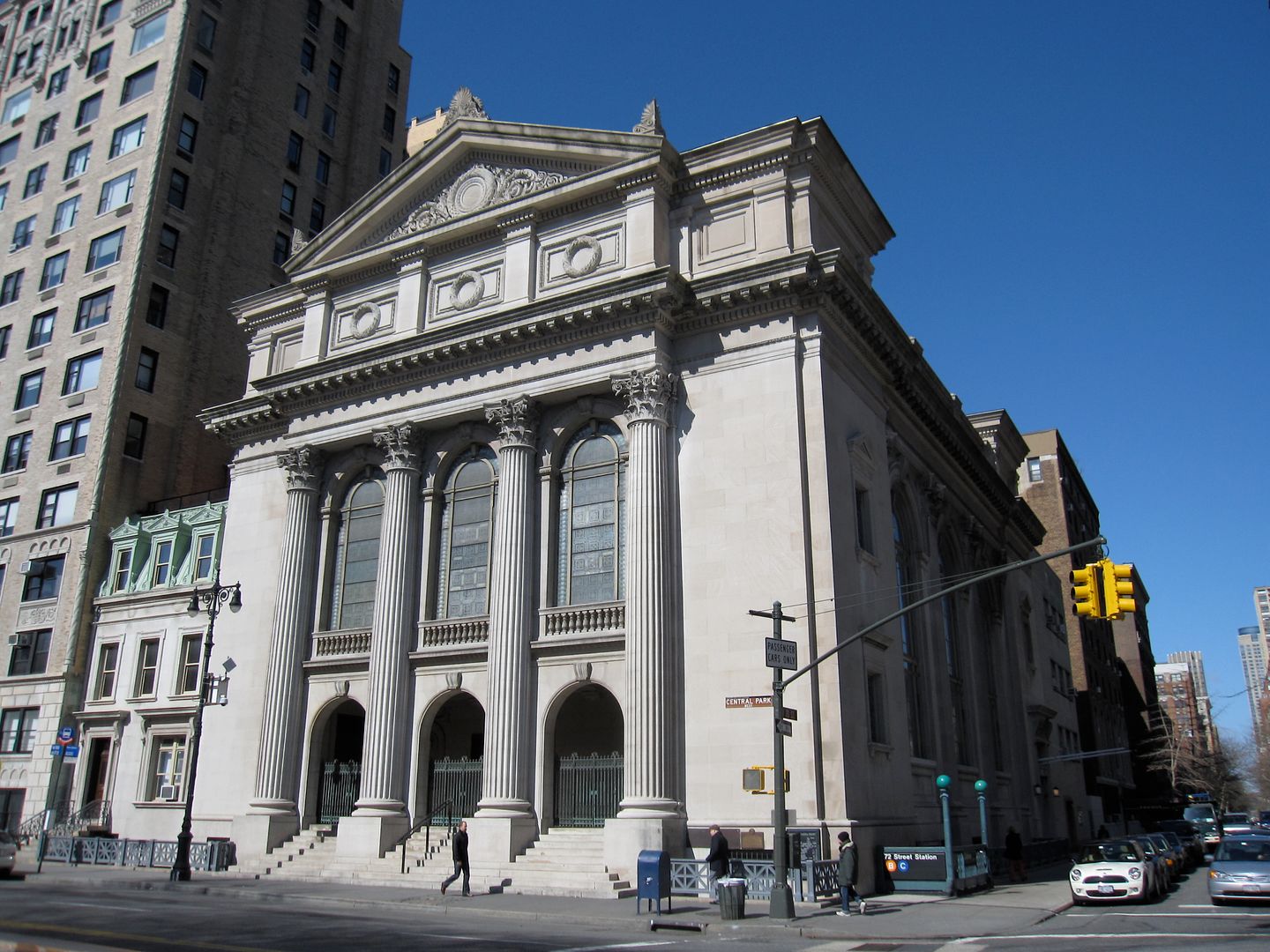
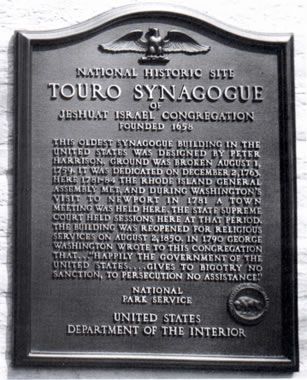
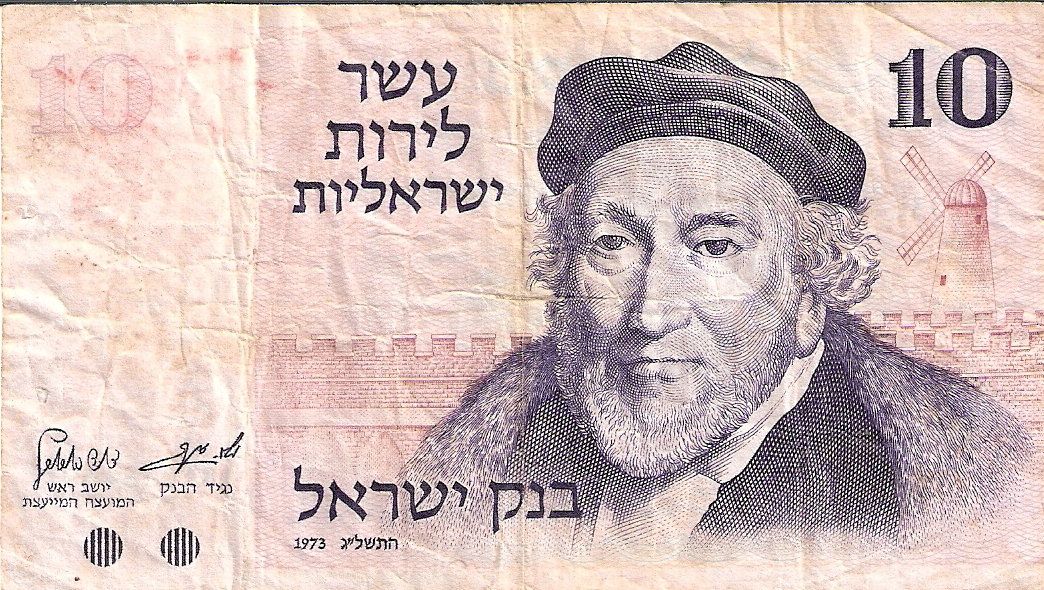
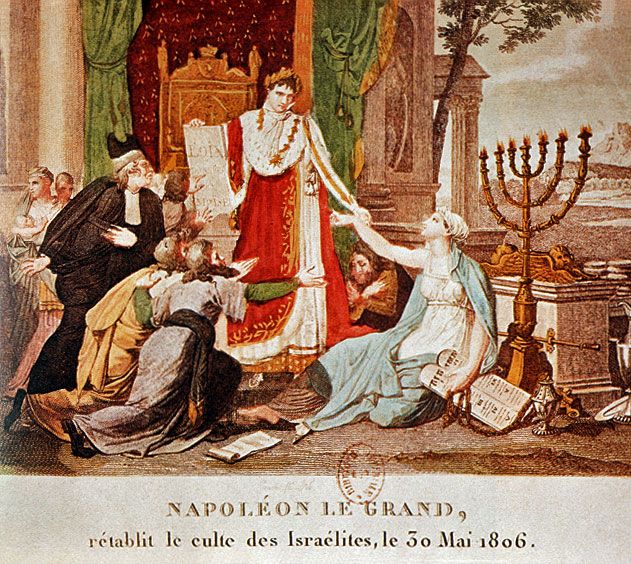
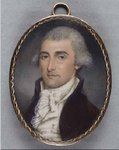

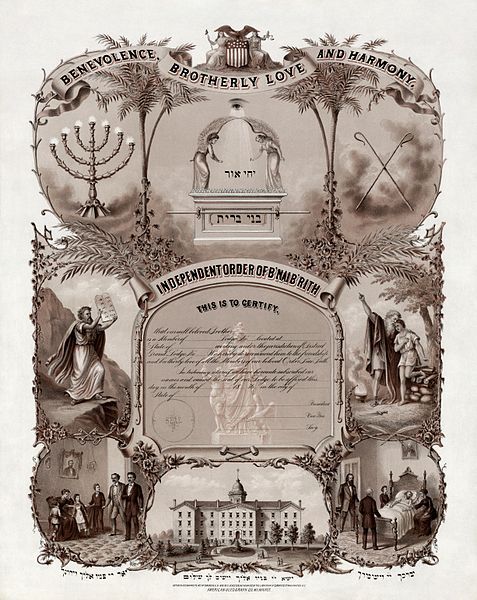
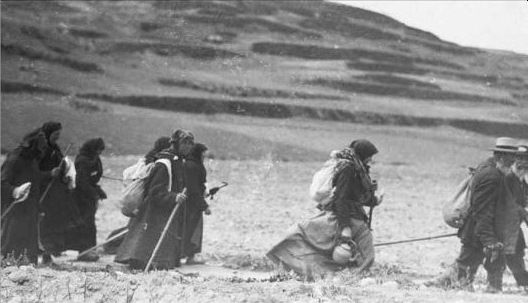

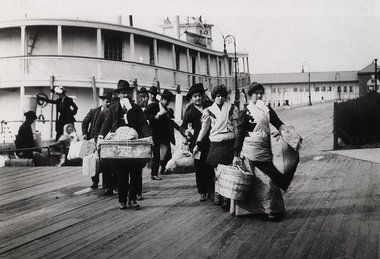
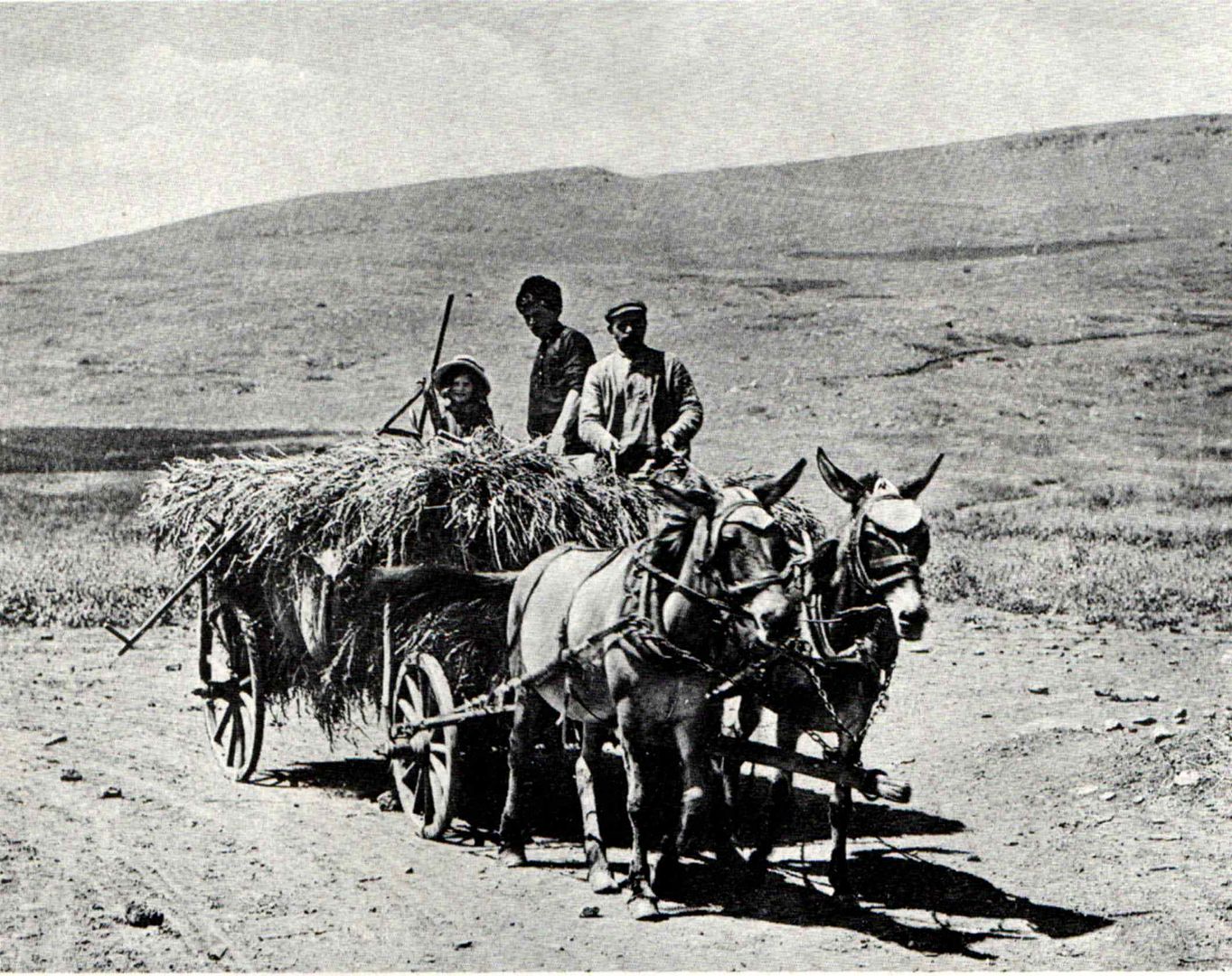
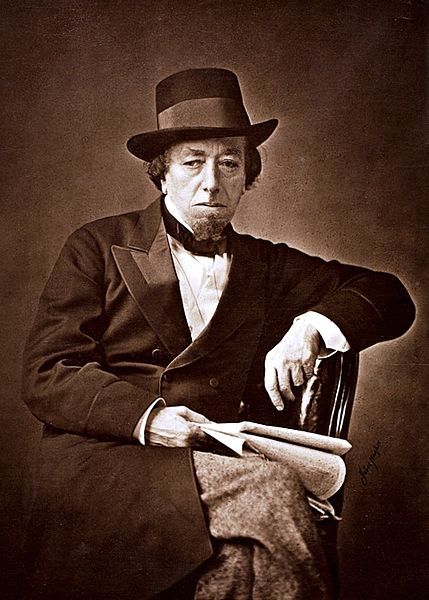

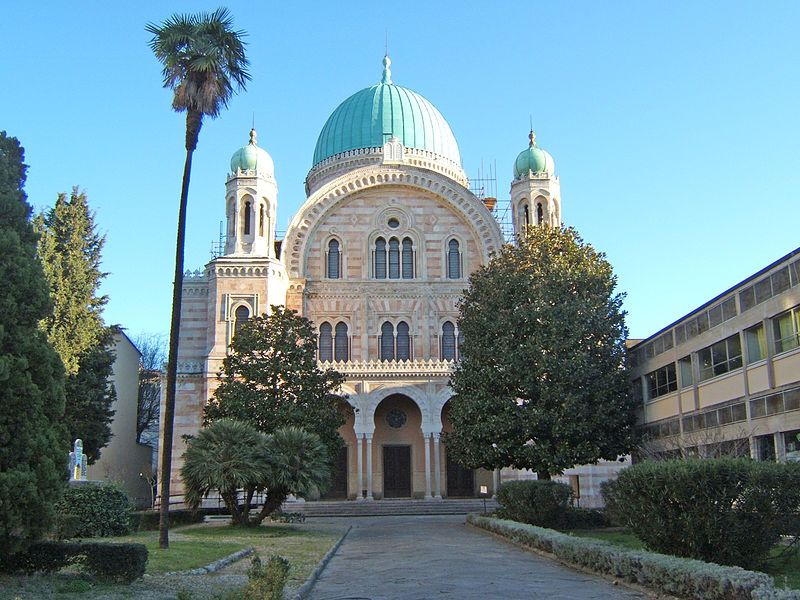
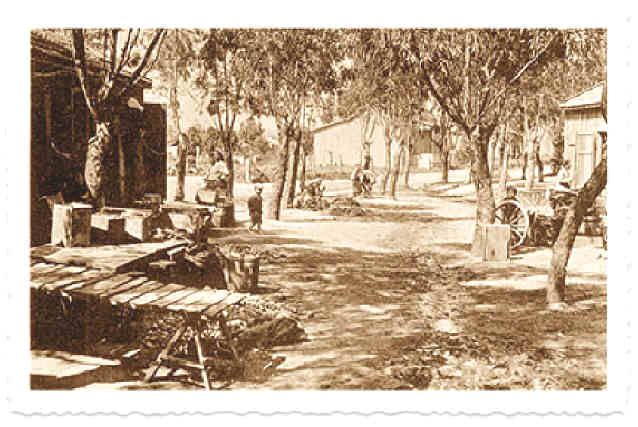
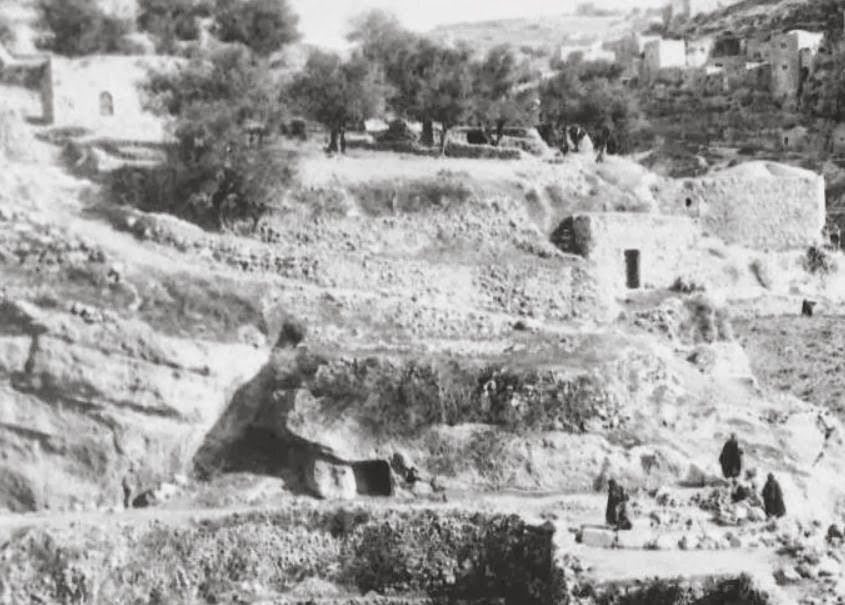
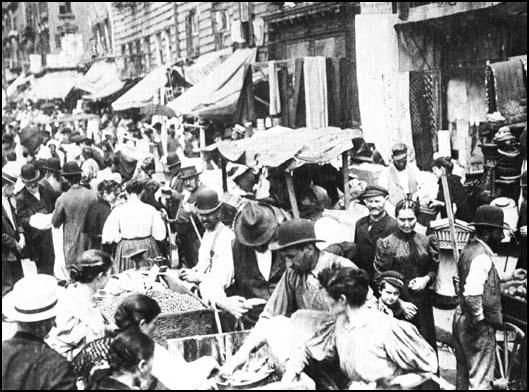

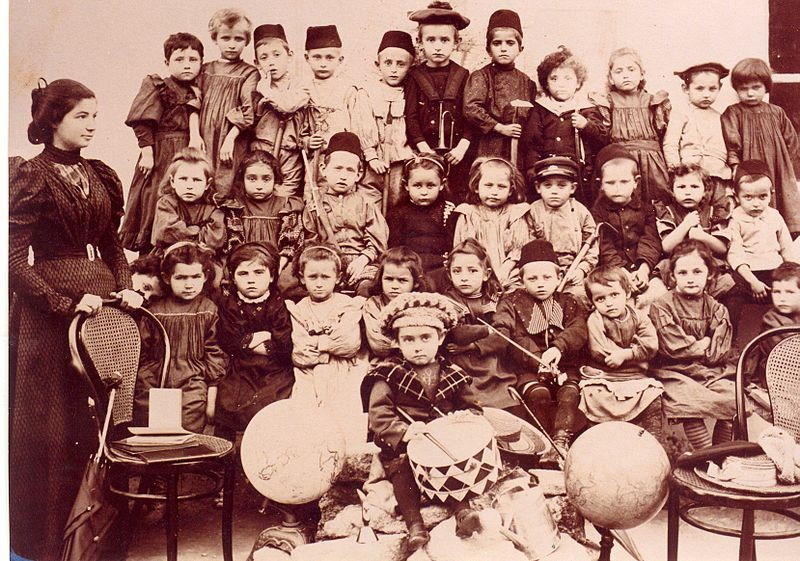
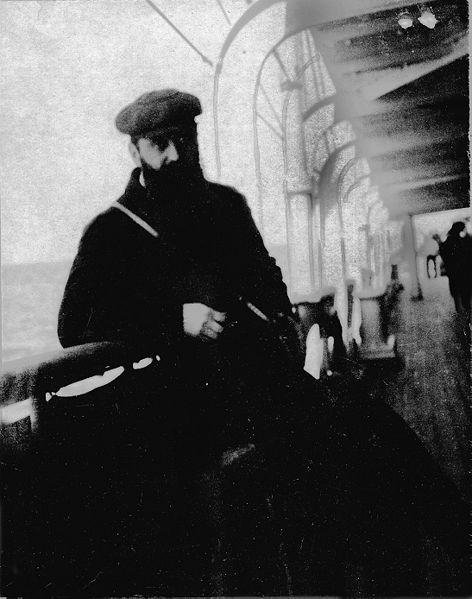
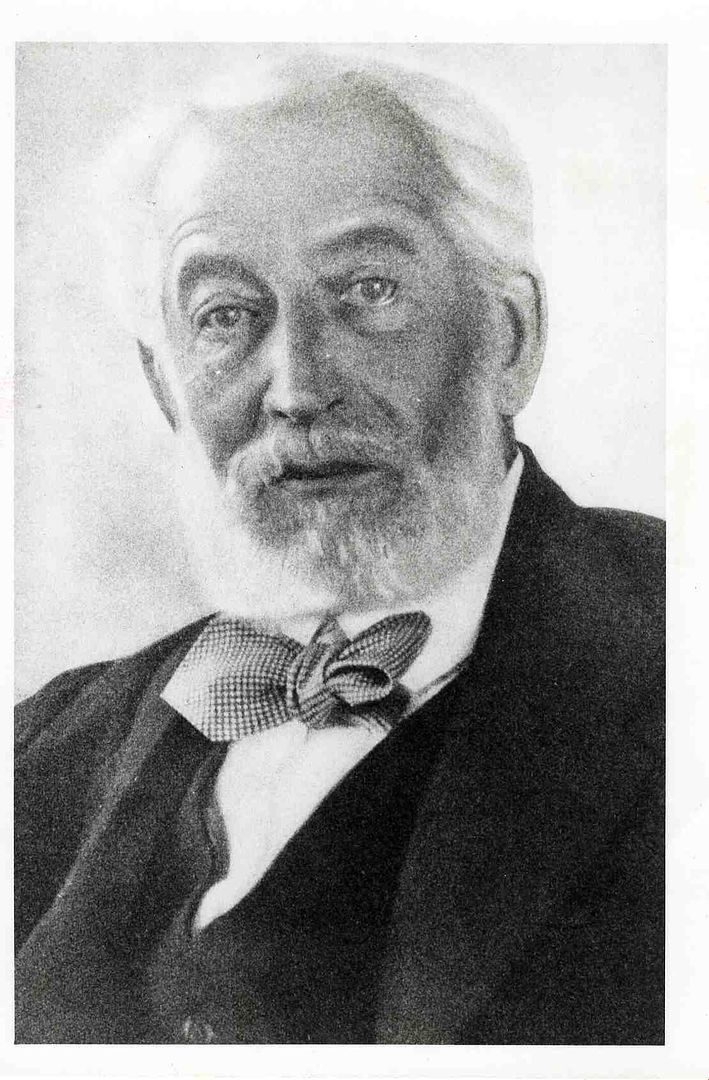
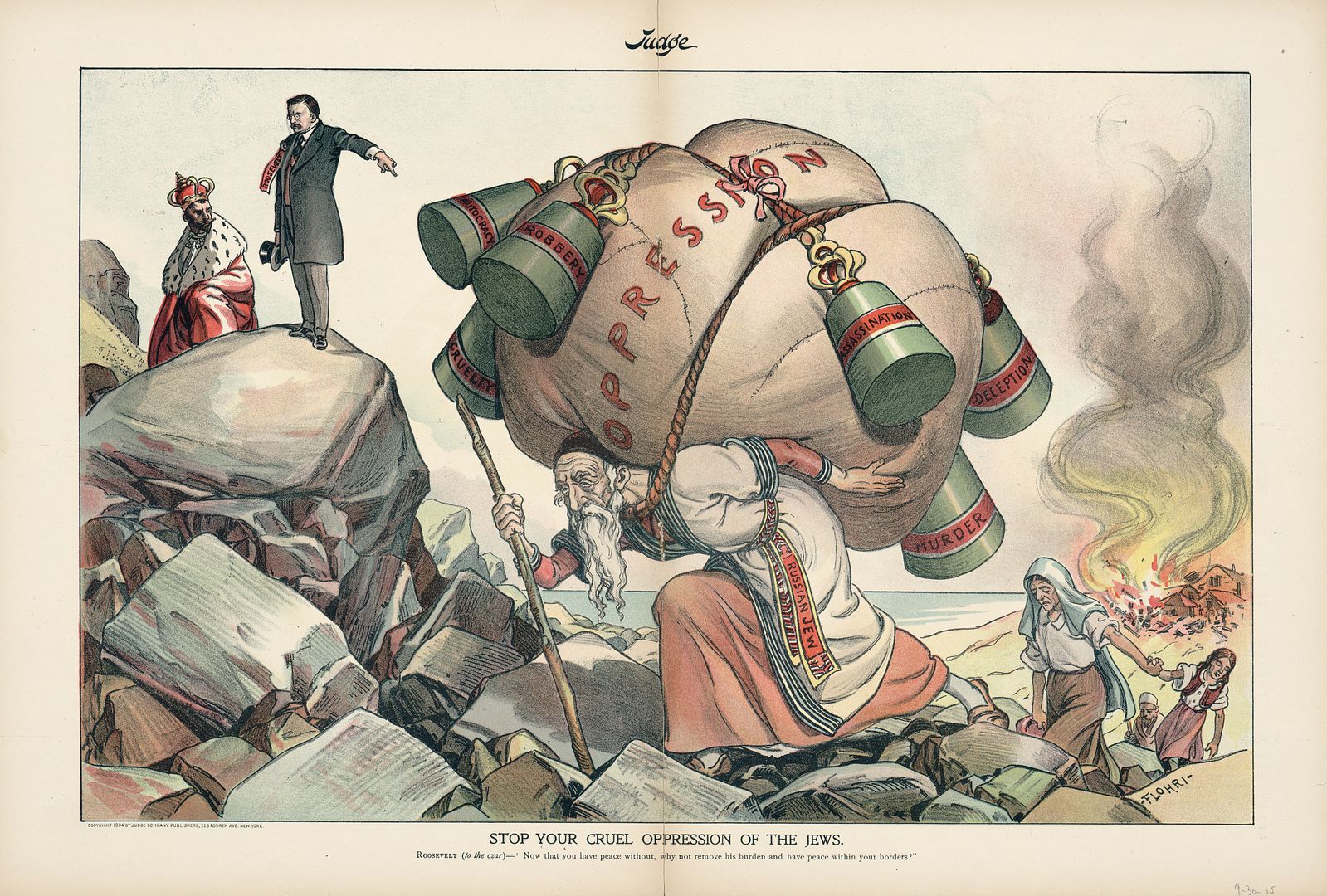
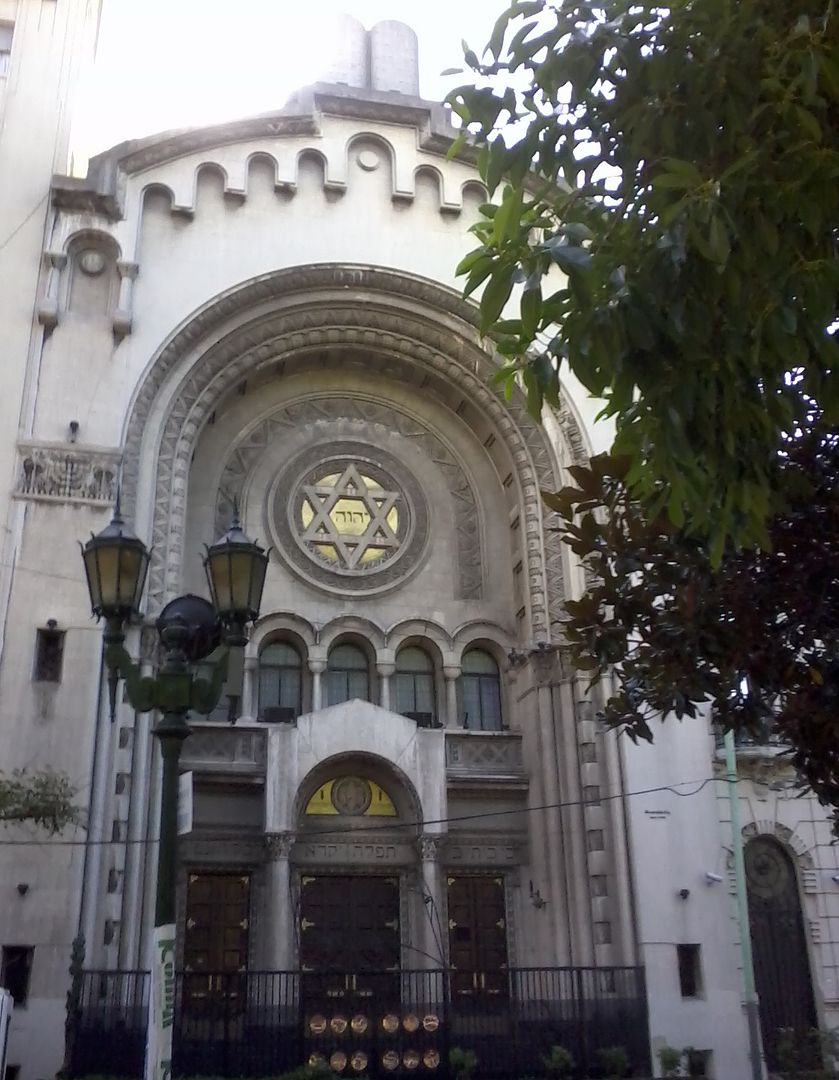

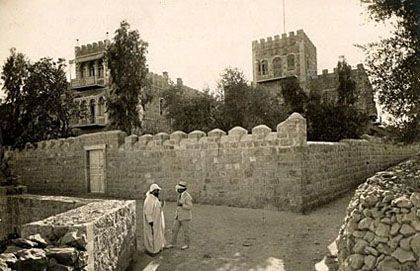
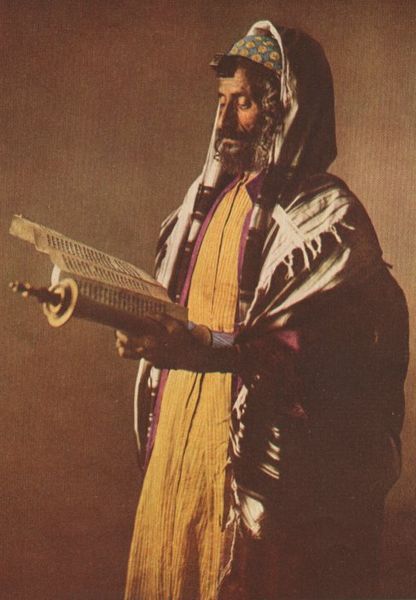
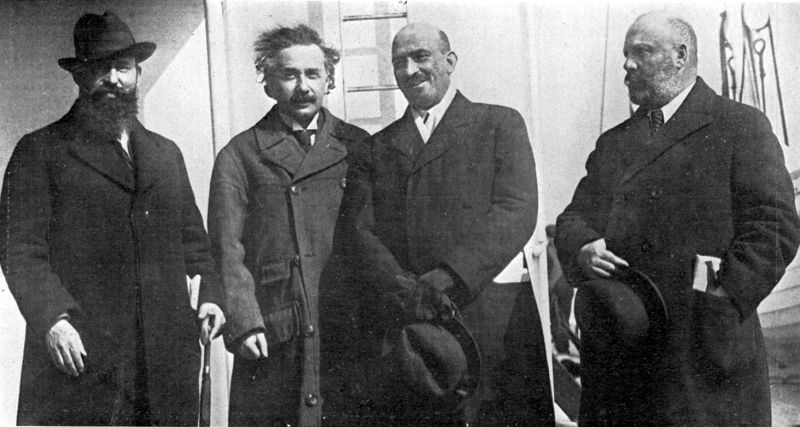

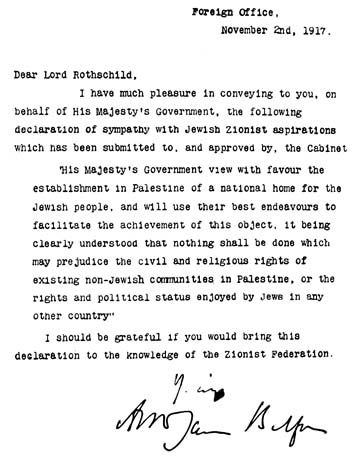
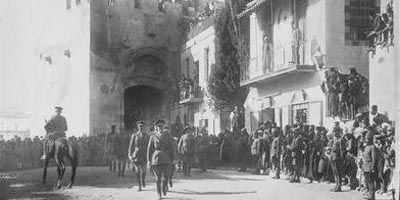
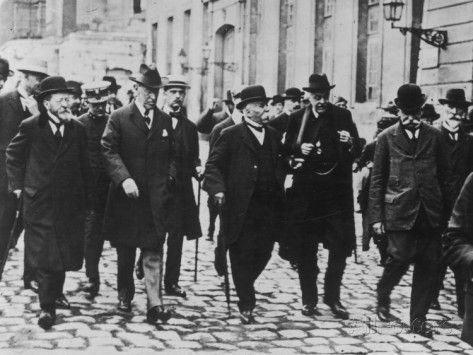
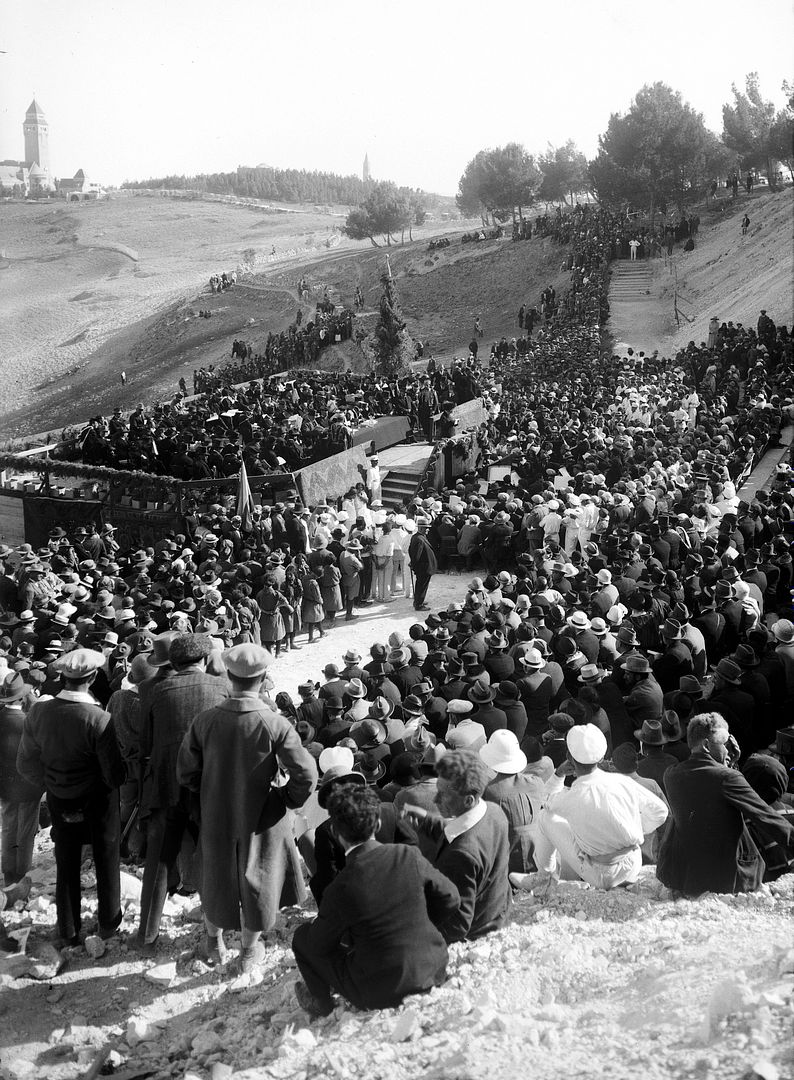
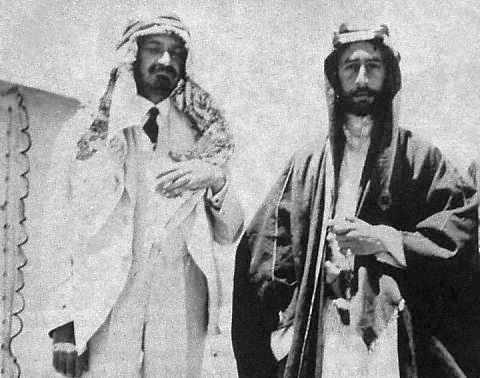
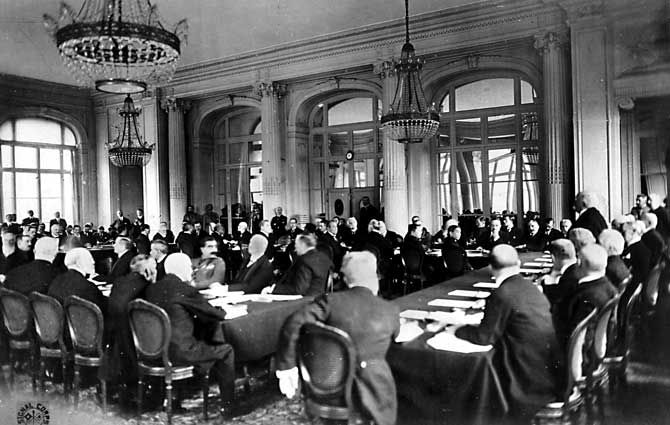

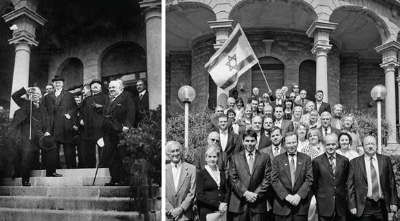
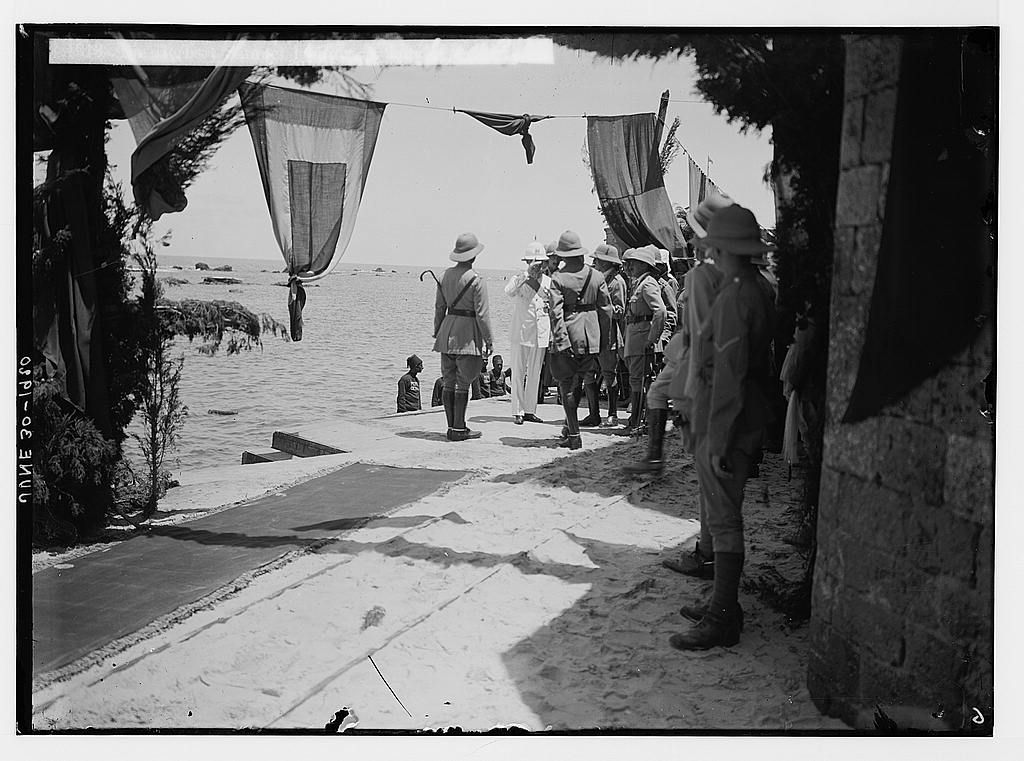
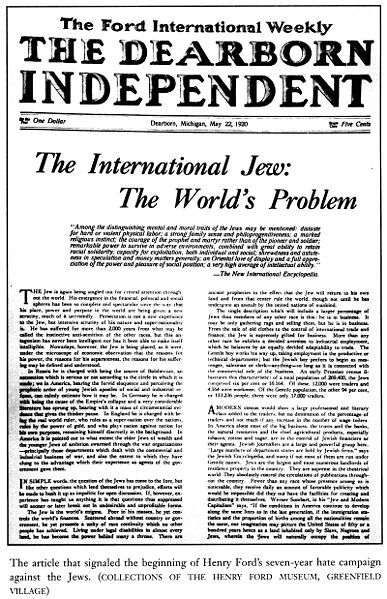

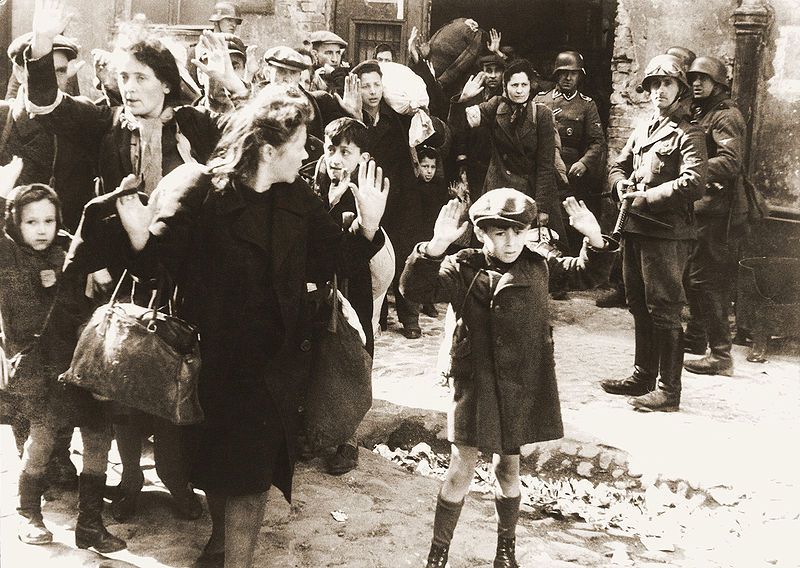
No comments:
Post a Comment